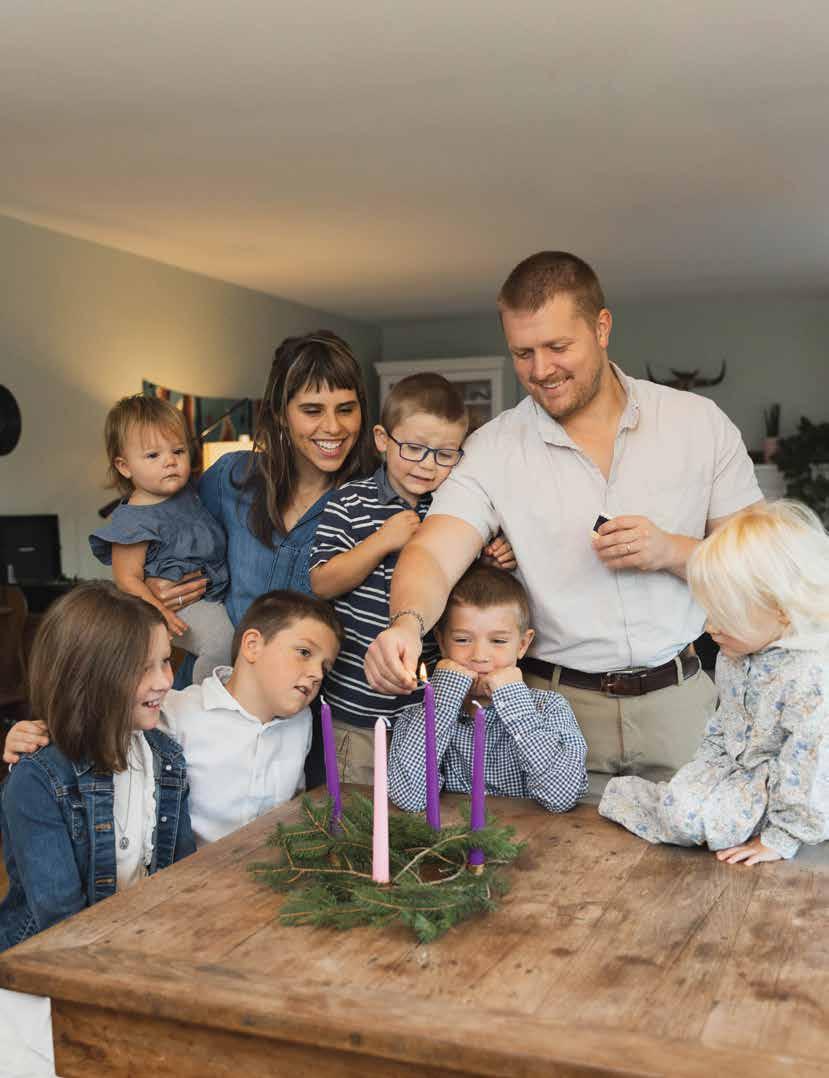

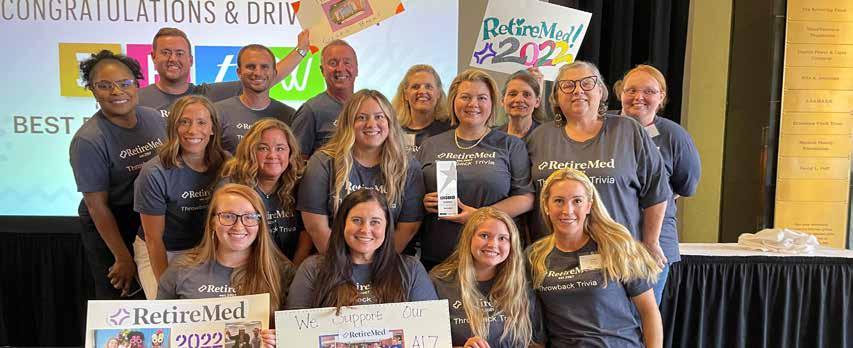






Have you ever felt “spiritually dry”—that sense of struggling to pray, not feeling connected to the Creator, or even doubting? Maybe you’re not praying as much or wondering what you did to deserve something bad happening in your life. I certainly have, and I know I’m not the only one.
What brings periods of spiritual dryness? For some it’s grief, and for others it’s poor health, monotony, or even boredom—having too much time to think. Perhaps it’s connecting more with the secular than the spiritual or an event that shakes your faith.
Personally, I’ve been “whammied” by many of the above, simultaneously and for months. And when I forget to turn to God—or perhaps stubbornly choose not to—it’s easy to feel desolate and alone.
However, even during periods of spiritual dryness, God, in His infinite love, gives us redeeming moments. He keeps reaching, striving to pull us back in. When I think of these glimpses of God, I am reminded of the Star of Bethlehem, the light in the dark, the guidepost for the Magi. It’s a reminder of Advent’s purpose: an intentional time of hope... of joy... of love... of peace. It’s the time when we purposely focus on the awe-inspiring reality that God delivered His Son as an infant into this often-dark world.
We each likely reflect on the Christmas miracle a little differently, depending on who we are at this time and our own life experiences. I can’t help but view the Nativity through the lens of motherhood, trying to relate to Mary, to her

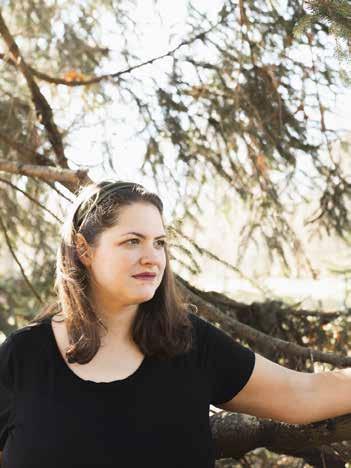
hope and persistence. Confronted with the dark possibilities of being cast out of society and losing her husband while bearing the Son of God, she still said, “Yes.” As Jesus grew, I imagine countless days of fear and worry, of chasing a toddler and bearing constant crying. She likely encountered illness and certainly endured grief. I find it comforting to know that she experienced many difficulties we face today, and that, if we ask her, she will pray for and with us from Heaven.
As we enter Advent, I pray you will join me in making this a time for intentional prayer. Even if everything feels dark, pray. Even when you feel you can’t, say a “Hail Mary.” Keep reaching for God, keep following His lights in the darkness, and embrace this season of hope, joy, peace and love.
Happy Advent and Merry Christmas.

PUBLISHER
Archbishop Dennis M. Schnurr
MEDIA SALES
Deacon Graham GallowayDIGITAL ENGAGEMENT
Dominick AlbanoEDITORIAL DIRECTOR
Jessica RinaudoGRAPHIC DESIGN
Emma CassaniNEW MEDIA EDITOR
Greg HartmanPHOTOGRAPHY
Margaret SwensenSOCIAL MEDIA
Katherine SwansonLiving Advent
Intentionally page 18
Mi Casa es Su Casa page 24
12 THE ULTIMATE GUIDE TO ADVENT IS BACK!
DOMINICK ALBANO & FATHER JACOB BODDICKER, SJ
18 LIVING ADVENT INTENTIONALLY KATIE SCIBA
Ways to be present in the season with your family

ON THE COVER
The Gigandet family gathers around their family table to light the Advent wreath.
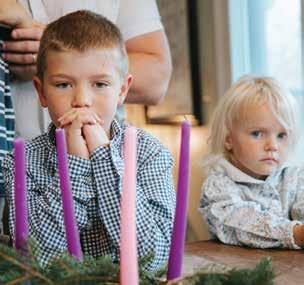
THE CATHOLIC TELEGRAPH
8 EUCHARISTIC REVIVAL FATHER ROBERT J. HATER
The Great Mystery: Jesus comes to us on our altars
16 YOUNG CATHOLIC PROFESSIONALS
ALLEGRA THATCHER New chapter launches in Cincinnati
24 MI CASA ES SU CASA KARY ELLEN BERGER
Fiorelli family inspired to walk Camino together
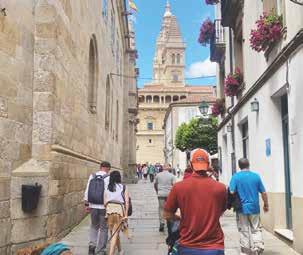
28 AWARD WINNING STEM PROGRAM
BONNY VAN
Bishop Leibold School takes top honors
30 PEOPLE OF FAITH KATIE SCIBA
Gary DeFosse
32 SHAPED BY LOVE
EILEEN CONNELLY, OSU Chaplain service at Children’s Hospital strengthened Father Mike Paraniuk’s faith
40 OUT & ABOUT IN THE ARCHDIOCESE
7 QUESTION OF FAITH FATHER DAVID ENDRES
When children leave the faith
10 BOOK REVIEW
BO BONNER
God Loves the Autistic Mind
Written by Father Matthew P. Schneider, LC
14 A CLOSER LOOK DR. KENNETH CRAYCRAFT
Seasons’ greetings and Christian discernment
20 SHINE ON DOMINICK ALBANO
What’s under your Christmas tree?
34 SEIZE THE MOMENT NICHOLAS HARDESTY
How to create a sense of community in your parish
36 KIDS’ CORNER St. Charles de Foucauld
38 THEOLOGY OF THE BODY
DR. ANDREW SODERGREN
The tragedy of sin - part 2
42 THE FINAL WORD BROTHER TIM SUCHER, OFM
What are we waiting for?
POPE FRANCIS’ PRAYER INTENTION FOR DECEMBER
For Volunteer Not-for-Profit Organizations
We pray that volunteer non-profit organizations committed to human development find people dedicated to the common good and ceaselessly seek out new paths to international cooperation.
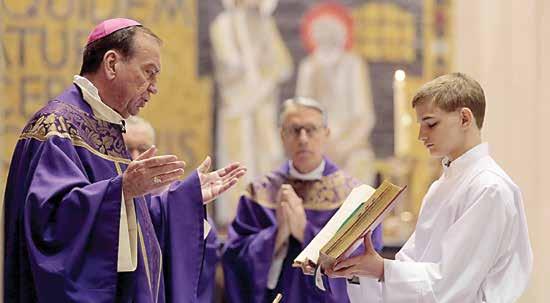
Every year the Church blesses us with a season to prepare ourselves for the coming of the Lord at Christmas. Much exterior preparation takes place during the four weeks of Advent: we decorate our homes, purchase gifts for loved ones, bake cookies and host parties. All of these things should be directed toward fostering our awareness of the great mystery we celebrate on Christmas Day: the birth of our Lord Jesus Christ. He alone is our Savior, and to Him we cry out, “Emmanuel, Lord, come to save us!”
In Advent, we prepare to celebrate God’s love for us; a love so powerful that when our Lord saw our neediness, He desired to save us through His grace rather than leave us to suffer on our own. Pope Emeritus Benedict XVI reminded us that our cry for the Lord to come to save us echoes throughout history. He said, “This is the cry raised by men and women in every age, who sense that by themselves they cannot prevail over difficulties and dangers. They need to put their hands in a greater and stronger hand, a hand which reaches out to them from on high” (Urbi et Orbi Christmas Message, 2011).
None of us can save ourselves; we need God’s help. We need His transformative grace. Without God, we cannot turn away from sin and conform our lives to the Gospel’s truths. Jesus comes to save us. He has done that through the mystery of his Passion, Death, Resurrection and Ascension, as well as through His teachings and His life’s example. We celebrate that Jesus was born as one of us in order to give absolutely everything for us.
Just as we exteriorly prepare for the coming of the Lord at
Christmas, we also should take advantage of these weeks to interiorly prepare our hearts to welcome our Savior. The Church’s Advent liturgies are filled with readings from the prophets about the People of Israel’s anticipation of the Messiah’s coming. Beautiful hymns give voice to the eager expectation shared by Christians over the course of the centuries. Our personal prayer, too, should foster in us the desire to accept the Lord’s hand and allow Him to pick us up and guide us along the path of discipleship. Families can pray together with the assistance of reflections and the traditional prayers associated with lighting an Advent wreath. This is also a time to humbly encounter the Lord in the Sacrament of Reconciliation and ask Him to forgive our sins and heal us by the grace which only He can give.
Certainly, this is a busy time of year and, in the midst of that busyness, it is easy to arrive at Christmas Day and be surprised it is already here. We can be disappointed that we did not take advantage of the opportunities Advent offers to grow closer to God and allow Him more deeply into our lives. As this season of both exterior and interior preparation begins, let us take a moment to silence our hearts and reflect on the magnitude of God’s love, which we will contemplate in the image of the stable of Bethlehem. This Love will be born as a Person, a Child, a Savior. Jesus is born for you and for me.
Just as Mary and Joseph wondered in awe as they beheld the Christ Child, so too let us arrive at Christmas Day with great gratitude and love for God, who has chosen to save us in such an unassuming way.
ARZOBISPO DENNIS M. SCHNURR
Cada año la Iglesia nos bendice con una temporada para prepararnos para la venida del Señor en Navidad. Gran parte de la preparación exterior se lleva a cabo durante las cuatro semanas de Adviento: decoramos nuestros hogares, compramos regalos para nuestros seres queridos, horneamos galletas y organizamos fiestas. Todas estas cosas deben estar dirigidas a fomentar nuestra conciencia del gran misterio que celebramos el día de la Navidad: el nacimiento de nuestro Señor Jesucristo. Sólo Él es nuestro Salvador, y a Él clamamos: “¡Emanuel, Señor, ven a salvarnos!”
En Adviento, nos preparamos para celebrar el amor de Dios por nosotros; un amor tan poderoso que cuando nuestro Señor vio nuestra necesidad, deseó salvarnos a través de Su gracia en lugar de dejarnos sufrir solos. El Papa Emérito Benedicto XVI nos recordó que nuestro clamor para que el Señor venga a salvarnos resuena a lo largo de la historia. Él dijo: “Este es el clamor del hombre de todos los tiempos, que siente no saber superar por sí solo las dificultades y peligros. Que necesita poner su mano en otra más grande y fuerte, una mano tendida hacia él desde lo alto” (Mensaje de Navidad Urbi et Orbi, 2011).
Ninguno de nosotros puede salvarse a sí mismo; necesitamos la ayuda de Dios. Necesitamos Su gracia transformadora. Sin Dios, no podemos apartarnos del pecado y conformar nuestra vida a las verdades del Evangelio. Jesús viene a salvarnos. Lo ha hecho a través del misterio de su Pasión, Muerte, Resurrección y Ascensión, así como a través de Sus enseñanzas y Su ejemplo de vida. Celebramos que Jesús nació como uno de nosotros para dar absolutamente todo por nosotros.
Así como nos preparamos exteriormente para la venida
del Señor en Navidad, también debemos aprovechar estas semanas para preparar interiormente nuestro corazón para recibir a nuestro Salvador. Las liturgias de Adviento de la Iglesia están llenas de lecturas de los profetas sobre la anticipación del Pueblo de Israel de la venida del Mesías. Hermosos himnos dan voz a la ansiosa espera compartida por los cristianos a lo largo de los siglos. Nuestra oración personal también debe fomentar en nosotros el deseo de aceptar la mano del Señor y dejar que Él nos levante y nos guíe por el camino del discipulado.
Las familias pueden rezar juntas con la ayuda de reflexiones y las oraciones tradicionales asociadas con el encendido de una corona de Adviento. Este es también un tiempo para encontrar humildemente al Señor en el Sacramento de la Reconciliación y pedirle que perdone nuestros pecados y nos sane por la gracia que sólo Él puede dar.
Ciertamente, esta es una época ajetreada del año y, en medio de ese ajetreo, es fácil llegar al día de Navidad y sorprenderse de que ya está aquí. Podemos sentirnos decepcionados por no haber aprovechado las oportunidades que ofrece el Adviento para acercarnos más a Dios y permitirle entrar más profundamente en nuestras vidas. Al comenzar esta temporada de preparación tanto exterior como interior, tomemos un momento para silenciar nuestros corazones y reflexionar sobre la magnitud del amor de Dios, que contemplaremos en la imagen del establo de Belén. Este Amor nacerá como Persona, como Niño, como Salvador. Jesús ha nacido para ti y para mí.
Así como María y José se asombraron al contemplar al Niño Jesús, así también lleguemos nosotros al día de Navidad con gran gratitud y amor por Dios, quien ha elegido salvarnos de una manera tan sencilla.
Our children received the sacraments and attended Catholic schools, but they no longer attend Mass and do not appear to be practicing the faith. Where did we go wrong as parents?
It is natural to be concerned for others’ spiritual well-being, especially our loved ones. We desire for them to share in eternal life—just as we hope for heaven for ourselves—and are troubled when they no longer seem to be practicing Catholics. This is a keen worry for parents who attempted to form and educate their children in the faith.
When children drift away from the Catholic Church (or even leave the faith by choice), it does not necessarily follow that parents contributed to their decision. Parents may have lived out the faith in word and deed, but it does not assure that one’s children will practice the religion they were taught.
There are many reasons someone may choose to leave— emotional, intellectual, or relational. For an adult, the practice of faith—or the decision not to practice—is a personal choice. Other people may be influences, but the decision is their own. It might be tempting to say, “to each his own,” but loving one’s children does not mean we have to pretend that their leaving the faith is not cause for sadness.
A recent book titled The Saint Monica Club asks how best to respond to fallen-away persons in our families. The book invokes the example of St. Monica, the mother of St. Augustine. She prayed for her son for 17 years before he turned to the Christian faith.
We can imitate St. Monica in her persistent prayer. We can pray for those away from the Church as part of our daily prayer. We can also call on the saints, including St. Monica, or a person’s patron or namesake. We should be patient and maintain hope in prayer.
The most important witness we can make for those away from the faith is to live according to Christ and His teachings. We can show forth the love of Christ, especially to our families. Elitism and spiritual pride are counter-examples of Christianity.
We can show the importance of practicing the faith through prayer and devotions, Scripture reading, and frequent reception of Communion and reconciliation. In more subtle ways, we can also communicate the importance of our faith, for instance, through crucifixes, rosaries, and other sacramentals in the home.
Helping someone return to the faith cannot be accomplished by being argumentative or trying to elicit guilt, but this does not mean that religion should not be discussed. Be willing to discuss questions of belief with someone who may no longer be practicing. Ask them to share their perspective. Listen well and then respond: be honest and open and avoid becoming frustrated or angry.
Without insisting or confronting, a parent can extend an invitation. This includes attending Mass as a family on Mother’s Day or joining in a prayer before dinner. These small reminders of faith can open the door to a person’s return.

When a child leaves the faith, it can be easy to focus on this aspect of their lives, but it is an opportunity to love the person more deeply—to respect them but continue to witness to the truth and beauty of the faith, praying as St. Monica did, that a child might come home.
FATHER DAVID ENDRES is professor of Church history and historical theology at Mount St. Mary’s Seminary & School of Theology.
The Fourth Lateran Council reaffirmed in 1215 what the Church had believed for centuries by using a fairly-new term: “Transubstantiation.” This term was used to explain that the essence of bread and wine became the true Body and Blood of Christ, even if the appearances of bread and wine remained intact.
 BY FATHER ROBERT J. HATER, PHD
BY FATHER ROBERT J. HATER, PHD
A priest of the Archdiocese of Cincinnati, Father Hater is a Professor Emeritus at the University of Dayton. He has done extensive work in evangelization, ministry and religious formation. An internationally known lecturer, he is the author of over 35 books, the most recent of which, Evangelizing Today’s Domestic Church , was published by Our Sunday Visitor Press in 2022.
When invited to write this Eucharistic Reflection for The Catholic Telegraph, I recalled my similar article for a 2021 Advent edition of Our Sunday Visitor Newsweekly that was concerned for the many people who stopped going to Mass.
I hope to motivate Church members to better appreciate the Eucharist. If what I write helps one person better understand Christ’s Eucharistic presence, my efforts are worthwhile.
Belief in Jesus’ real presence in the Eucharist requires the grace of God, which often works through us. With this said, we ask for the Holy Spirit’s wisdom as we reflect on the mystery of the Eucharist.
When I celebrate Mass, I am keenly aware that I am in the presence of a Great Mystery that is more profound than the size of the universe or the number of stars in the sky. Although
I did not use these words in my early years, I always regarded the Eucharist as a mystery. In theology class, we learned that early Christians referred to the Mass and Sacraments as “Celebrating the Sacred Mysteries.” What is this Great Mystery?
Words fall into insignificance as we search for ways to address the marvelous mystery that “God so loved the world that he gave his only Son …” (Jn. 3:16). As He comes to us on our altars, the Eucharist celebrates the Great Mystery of Jesus’ dying and rising.
From childhood on, I learned that Holy Communion was really Jesus under the appearances of bread and wine and that it was important to receive the Eucharist often and participate in this Great Mystery.
As I grew, this realization that the Eucharist is Jesus, the Son of God, motivated me to attend daily Mass before school. To this day, it continues to remind me that there is no one and

nothing greater than the God who made us, died for us, and remains with us in mystery. When celebrating the Great Mystery, Christ’s sacrifice on the Cross and His Resurrection come alive on our altars, and we remember Jesus who died and rose on Easter Sunday. This compels us to live as He lives in us, which He does regardless of the price tot love us.
As an adult, I know the theology underlying the Eucharist, but what I learned from theology books only enhanced my awe for this Great Mystery.



THE HEART OF IT ALL
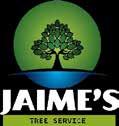
I thought often of this Great Mystery during the Pandemic, when I lived alone for nearly two years. I wish I could have been with my parish to celebrate the mystery of Jesus’ dying and rising made present on our altars.

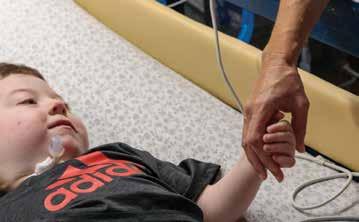
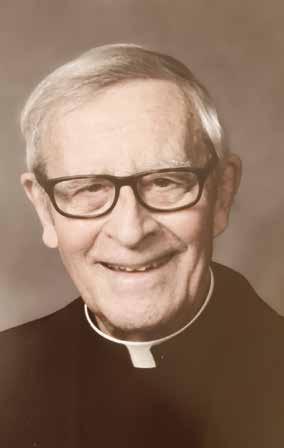
I celebrated the Eucharist by myself on a simple altar that I constructed in my home, where I encountered Jesus and experienced the Great Mystery. This renewal of the Last Supper and the Paschal sacrifice of Christ in its simplest liturgical form—not the color of the vestments, their shape, the music, or who was in attendance—made Jesus present on the altar. In my celebration, there was no splendor and little music. The vessels were simple as were the vestments. And yet, when I celebrated Mass, I was part of the entire Body of Christ, celebrating together the Great Mystery of God’s love all over the world.
MY PRAYER
Lord, give us a better appreciation of the Great Mystery and a deeper realization that you are with us as Love Incarnate in the Eucharist. Amen.
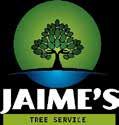
No experience is quite as difficult as being misunderstood. Who we are as persons—belonging to a wider group of people—is tightly intertwined with our ability to communicate. When we are misunderstood, it is not simply frustration at some technical breakdown; instead, something more fundamental about us is brought into question. When we misunderstand ourselves and our relationship with God, this dissonance is even more jarring.
I have been blessed to live with my autistic son, Elias, for 15 years. During that time, I have come to appreciate from Elias the fundamental frustration of misunderstandings. Nowhere has this been more apparent than trying to teach prayer. An already difficult task for most parents, it is especially challenging for a mind that thinks quite differently from my own.
Happily, Father Matthew P. Schneider’s new book, God Loves the Autistic Mind, provides a path to understanding differently in place of misunderstanding. As the subtitle indicates, the book is a “prayer guide for those on the spectrum and those who love us.” Indeed, the first thing I did after reading the book was share it with my son, because I wanted to know what he would say. As is often the case, he surprised me with his take.
I anticipated hearing how particular pieces of advice struck him, how the lists of information organized things for him, or how the structure of the reflections might appeal to him. But
REVIEWED BY BO BONNER
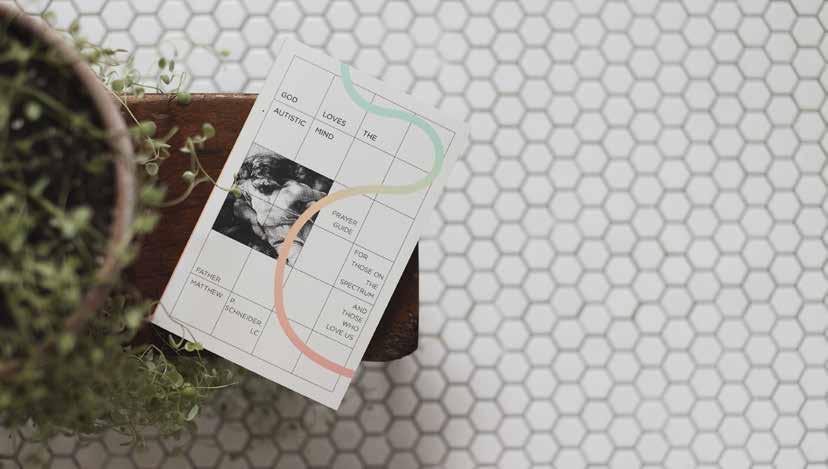
this was a manifestation of my misunderstanding of how this book was written for autistic minds. Because of the attention Father Schneider pays to how the autistic mind works, Elias was able to cut to the heart of the book—how to pray. My son was moved to sympathy for other autistic people’s struggles, as outlined by Father Schneider. He let me know he would pray for them—a ringing endorsement for the book!
As a non-autistic person, I now realize why the structural and contextual organization of the book is so helpful. From the straightforward but thorough way Part One lays out its argument, to the tried, true, and reassuring repetition of Part Two’s meditations on prayer, anyone with an autistic loved one will smile with familiarity. Elsewhere it might be viewed as a stylistic weakness, but here that perspective profoundly misunderstands what is so wonderful about the book. Father Schneider has enabled for us an understanding insight into a framing of mind so often misunderstood. This makes God Loves the Autistic Mind a triumph, for it shows us how to better love the autistic mind.
Bo Bonner is Senior Advisor for Mission Initiatives, Director of the Center for Human Flourishing at Mercy College in Des Moines and the co-host of the UnCommon Good on Iowa Catholic Radio.
God Loves the Autistic Mind by Father Matthew P. Schneider, LC; Pauline Books & Media US; $16.95; 224 pages; June 10, 2022.
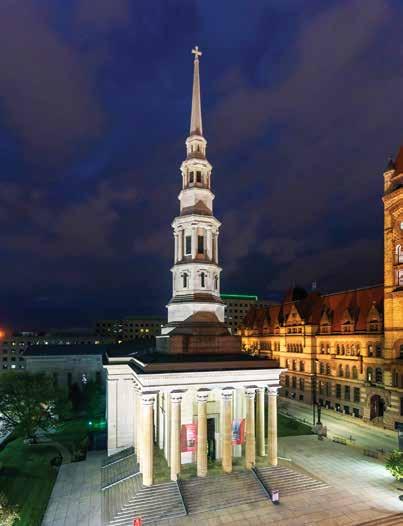
We are blessed by your continued support and your generosity. Your help enables this Cathedral Basilica to remain as an impressive symbol and home to all Catholic people of the Archdiocese of Cincinnati. There are several ways to support the Cathedral Basilica. Your help will enable us to preserve our archdiocesan treasure for future generations.
Thank you for your generous donations. Please consider an end of year gift that will be applied to one or more of these important programs:
Here are a few ways to support the mission of the Cathedral Basilica. Contact the Cathedral Basilica Business Manager at (513) 421-5354 for more information.
• Stock Donation.
• Qualified Charitable Distribution from your IRA. A Qualified Charitable Distribution is a direct transfer of funds from your IRA custodian. This type of gift may qualify to fulfill your required IRA minimum distribution (RMD), enabling you to avoid paying tax on the distribution, while providing a gift to support the work and mission of our parish.
• Gift from your Donor Advised Fund (DAF). This type of gift is generally eligible for tax deductions.
Donations made on or before December 31, 2022, might have the added benefit of being reported as charitable deductions. Please consult your tax advisor or financial advisor for information on the potential tax benefits of your charitable donations.
Please specify how you would like to direct your donation.
I would like to support our Cathedral Basilica. Use my gift where most needed.
Apply my gift to the Friends of the Cathedral Basilica.
Apply my gift to the Archbishop Karl J. Alter Society.
Make check payable to:

Cathedral Basilica of St. Peter in Chains or donate online at stpeterinchainscathedral.org
Mail this form, along with your check to:
Cathedral Basilica of St. Peter in Chains 325 W 8th Street, Cincinnati, OH 45202
Your donation is tax deductible. Save a copy of this document for your records!
The annual Ultimate Guide to Advent is back, better than ever and still free! This years’ guide features brand new content, including children’s activities, favorite Advent traditions and advice on how to have your best Advent. Delivered weekly throughout the Advent season, each issue opens with a sonnet written by Father Jacob Boddicker, a Jesuit priest at St. Francis Xavier Church in downtown Cincinnati.

Check out this sneak peek of an opening sonnet, and be sure to visit thecatholictelegraph.com/AdventGuide to get your free guide delivered right to your inbox!
E’er since Adam and Eve did Eden part Did God, with longing, wish great grace to give, To pour out, nay, pour in to mankind’s heart His life, His love that His children might live. A wineskin He’d fashioned in barren womb, That would this grace—the whole of it—contain. Ere long an angel came to beg her boon, That God and Mankind might be one again. Her fiat out-shouted his trumpet blast, And in joy the angel to God returned.
Pouring out His heart, ev’ry drop, to last; God breathed His Eternal Word unto her. Within her heart conceived she first this Word Ere in womb she conceived her son, our Lord.
RSVP
We wish all of you and your families great tidings of comfort, and of joy, with many blessings this Advent. Merry Christmas wishes and blessings from all of us at Gate of Heaven Cemetery. Join Us this December Holiday Season!
*2nd Annual Tidings of Comfort and Joy Advent Concert
Thursday, December 1, 7 p.m. – 8:30 p.m. Bring family and friends into our chapel to hear wonderful music from Archbishop Moeller’s and Ursuline Academy’s Vocal Ensembles, and Friends of Gate of Heaven, Jeanne Blessing and Mark O’Keefe.
*Annual Wreaths Across America
Saturday, December 17 at 12 p.m. Veterans Garden, Gate of Heaven Let us all take time during this holiday to join together to respect, honor and pray for all serving our USA, away from their families this Christmas.
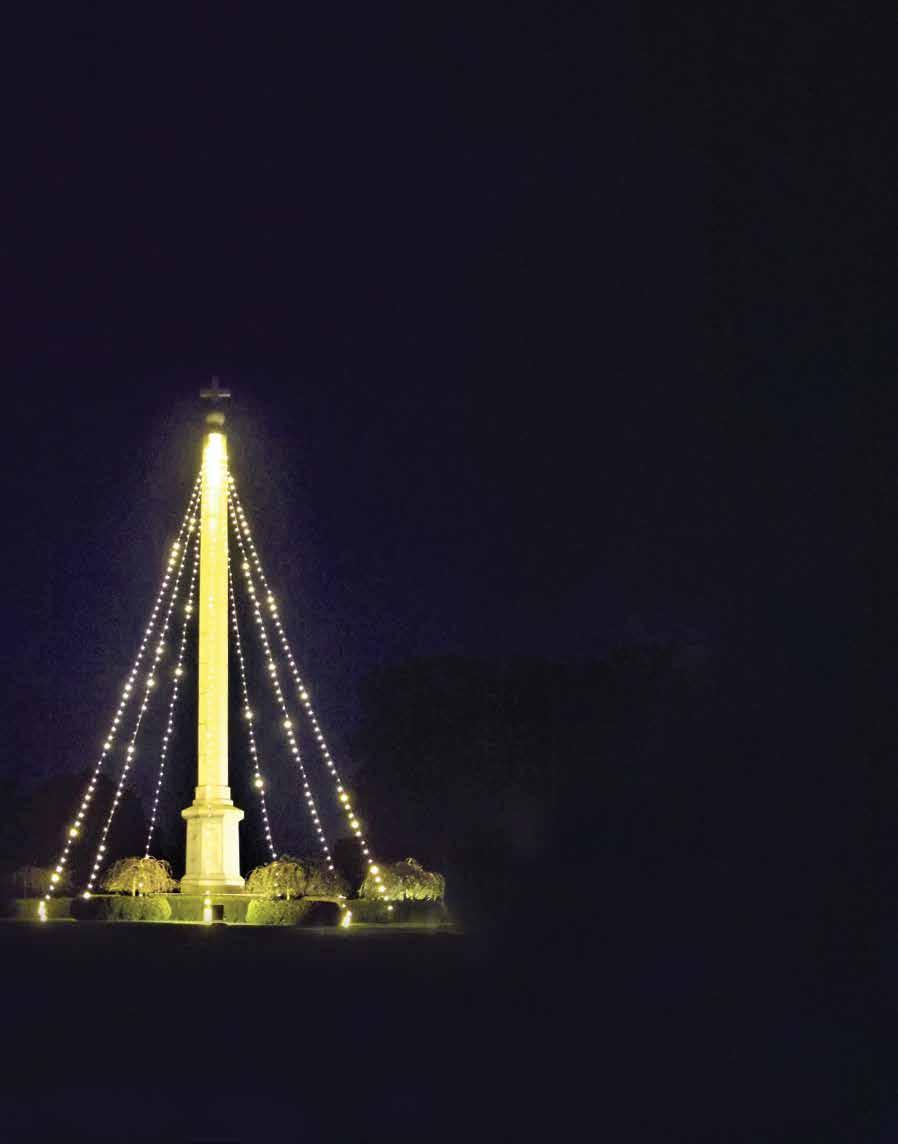
*Register for a Pre-Planning Seminar
Tuesday, December 13 at either 11 a.m., 2 p.m. or 6 p.m. Attend this seminar and you will be providing an extra special Christmas gift to your family, leaving behind a welcomed legacy of love and consideration.
Each year we hear the perennial objections of those who lament hearing the salutation, “Season’s Greetings” instead of “Merry Christmas.” The common complaint, of course, is that this season is about the birth of the Christ, the savior of humankind. Thus, the reasoning goes, recourse to the general reference of “holiday season” is an embarrassed and compromised retreat from the real import of the holy day of Christmas, toward which the Advent season points. This lament is popularly phrased in the trope, “Let’s put Christ back in Christmas.”
I have sympathy for this demurral, especially when it reduces Christianity to a season of mawkish, treacly sentimentality— the verbal equivalent of a Thomas Kinkaid holiday painting. Similarly, if its motivation is to maximize the season’s commercialization, the objections are well-taken. However, we can glean something important by thinking about Advent/ Christmas as one of many seasons that make claims on our lives or express what those lives mean. Whether corporately through the shared liturgical calendar or individually through individual characteristics, we are “seasonal” people.
When we hear the word “calendar,” our default inclination is to think of the Gregorian calendar, introduced by Pope Gregory XIII in 1582 and represented by that thing hanging on our kitchen wall where we track dentist appointments, soccer practice, school plays, and dinner dates. It measures the seasons experienced by everyone in a particular geographic area, but does not account for the more meaningful ways we count the days of our lives. In fact, most of us order our lives by more than one calendar, because we observe more than one season—and the other “seasons” are usually more consequential.

For example, my life is ordered around at least three additional seasons. One is the season of immediate family
events: children’s and grandchildren’s birthdays, wedding anniversaries, commemoration of deaths, and celebrations peculiar to my family. While these events obey the secular calendar, they are not defined by it. I order birthdays by my children’s chronological ages, not the calendar dates on which they fall. Similarly, tracking graduations and other milestones takes precedence over whether it is currently July or October.
The academic calendar’s seasons also order my life as I spend much time organizing my time by semesters and recesses. Whether it is Fall 2022 or Spring 2023 is often a more important consideration than the calendar month. Preparing course syllabi, compiling lecture notes, grading papers and enjoying mid-semester breaks are typically more consequential for my daily, weekly and monthly activities than whether the month is April or September.
Others can easily think of various seasons in their lives that are more compelling than the wall calendar’s chronology and vary by person and importance: baseball, ballet, planting and harvesting, hunting and other common endeavors. These life seasons are not incidental, but essential to how we see ourselves and relate to others. They remind us who we are.
A third season that orders my life and expresses who I am is the most important—I daresay it is the most important for this magazine’s readers. Measured by the liturgical calendar, it marks not just cycles of time, but eternity’s entrance into time. While the liturgical seasons do repeat themselves, the repetition is for the purpose of telling us that time—along with all calendars that measure it—points us toward the timelessness of eternal rest in God. More than any other, the liturgical calendar tells us both who we are and who we are called to be.
By the liturgical calendar’s seasons, from its New Year the first
week of Advent to its culmination in the Feast of Christ the King, we do more than remember the events of Christian salvation, we enter into them. We do more than simply mark the days until Christmas; we embrace Advent as a time of hopeful anticipation. We do more than merely commemorate Christ’s birth; we stand before the prince of peace in adoration and gratitude. The liturgical calendar draws us into seasons of discernment and contemplation, by which we enter more deeply and authentically into the Good News of our salvation. We observe the liturgical year’s seasons so that we can experience redemption by Him who redeems time itself.
In his fascinating new book, How to Inhabit Time: Understanding the Past, Facing the Future, and Living Faithfully Now (Brazos Press), Christian philosopher James K. A. Smith proposes that this seasonality of Christian life compels us toward discernment. “More art than science,” suggests Smith, “discernment is an effort at orientation.” And he proposes that “one of the most significant exercises of discernment we can undertake across our lives is to grasp our seasonal location.”

This is why the liturgical calendar is so important in the Christian’s life. Unlike the one on the wall, the liturgical calendar reminds us of the seasons of creation, fall, anticipation and redemption. It reminds us “when” we are, to use Smith’s term, not just “who” we are. It is by discerning “when” we are that we can orient ourselves in the story that God wrote for us. That story’s seasons move us toward the salvation He intends for us. They greet us, and invite us to celebrate them as a people born in time but ordered toward eternity. Let us, then, offer “seasons’ greetings” to one another, as we discern our lives in Christ during this time between times.
In Cincinnati’s Over-the-Rhine

Thank you to our St. Francis Seraph Ministries volunteers who prepare and serve breakfast and dinner for our community’s low-income and unsheltered residents every Monday through Friday.

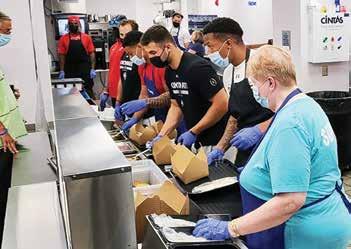
sfsministries.org
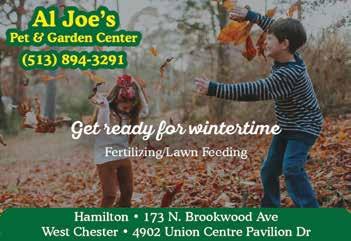





“A Catholic community catered around your everyday working person,” is how chapter president Patrick Macke describes Young Catholic Professionals (YCP).
A few years in the making, the Cincinnati chapter of YCP launched at last in October. The local initiative was bolstered by friends and Cincinnati natives in the Columbus area, which had a chapter first.
Macke volunteered for the position of president as the leadership team formed, saying it seemed like a great fit. “I’m a Cincinnati native, a cradle Catholic, I know a lot of people around the Cincinnati area but also work in a typical secular profession, in human resources in the healthcare system,” he said.
YCP’s three goals are firstly to form a community centered around the faith for the everyday working person who is Catholic, and secondly, to serve as a launching point for Catholic entrepreneurs.
The third objective, according to Macke, is connecting young Catholic business people with seasoned professionals. “We want to form the next generation of leaders who make sure those businesses thrive,” he said.
He also envisions a network of Catholic or Catholic-friendly business owners in the area. “Those are the places we want to support by having our events at, and encourage people to use their services —whether it’s landscaping, IT work, alterations… to have a united front in that professional community so that when you give your money to a place, you know it’s a place that supports your values and beliefs.”
He said the most difficult part of the process has been getting donors and funding for the chapter. “Cincinnati is a very Catholic town, so there are many good things going on in the community already. So you really have to help people understand how YCP is unique from other groups.”
YCP recruits board members from seasoned business professionals who are active in their parish communities, who often already invest in worthy causes. Macke and his team have recruited professionals who want to see young people passionate about their faith follow in their footsteps and support their parishes and communities in the future.
Moving forward, YCP will host two monthly events— happy hours and an executive speaker series. Local business owners and professionals will speak on professional and faith development, focusing on the topic of bringing faith to the workplace.
Macke said the launch party was very successful, with 150-200 attendees from a variety of communities. He said he was pleased with the diversity of age, profession and interests. Representatives of the board and the Columbus chapter were also present.
“It reflected that there is a lot of need for that type of community,” said Macke.
Those interested in finding out more can find the chapter at YCP Cincinnati on Facebook, ycpcincinnati. org or email ycpcincinnati@gmail.com.
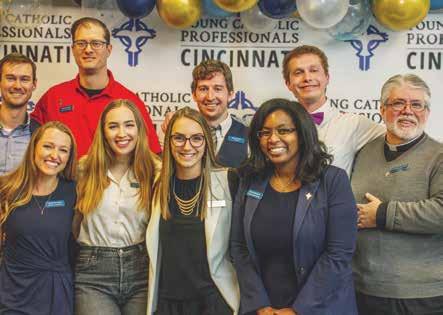
While future events will be for members, all members receive a plus one ticket to each event, and the chapter hopes to continue inviting others in. Membership is only $3 per month in order to be accessible, and includes access to events, YCP National resources like podcasts and recorded webinars, access to mentors from the national database, and a 24/7 spiritual hotline.
They’re also looking for additional board members from the professional business world, are always open to new members on the leadership team, and hope to get more involved at the parish level.
The final word, said Macke, is that YCP brings an unprecedented “hybrid of professional and spiritual development and a community that will support you in those things.”
St. Margaret Hall in Cincinnati, OH offers assisted living, nursing care, rehabilitation, respite care, and palliative care with unparalleled hospitality and quality.
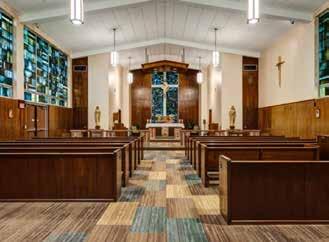
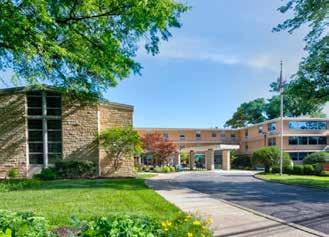
St. Margaret Hall, a member of the Carmelite System, is built to carry forth the mission of the Carmelite Sisters by proclaiming the value and dignity of the aged and infirm and providing collaborative ways to meet the needs of today’s elderly. As a faith-based, not-for-profit senior living community, providing compassionate care is a ministry for us, not just a job.
Learn more about our discount pricing and move-in incentives by reaching out to St. Margaret Hall today!
“We want to form the next generation of leaders who make sure those businesses thrive .”YCP Cincinnati leadership team.
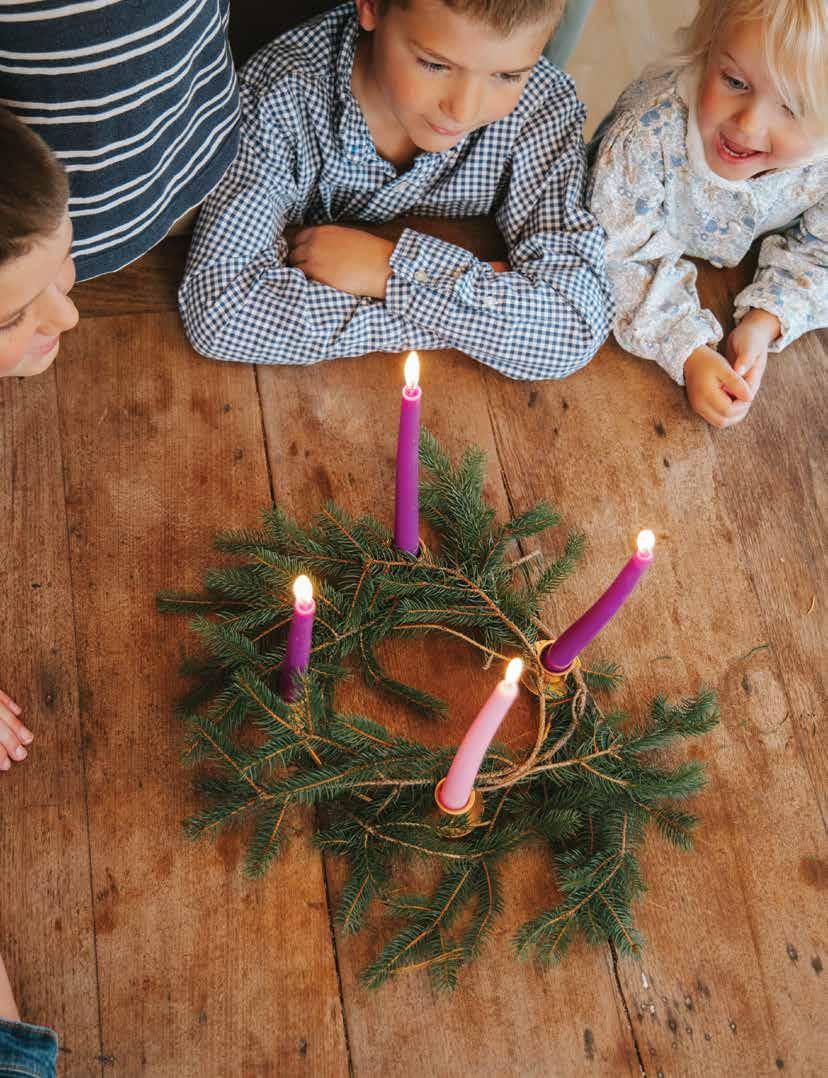
As I recently walked through a retail store with my kids, we saw the whole place decked out in snowflakes, North Pole signage, toy cars with trees strapped on top and, most puzzling, Star Wars Pez in candy striped boxes.
So, I nonchalantly quizzed my kids. “This stuff looks fun. What’s it for?”
“Christmas!” a few shouted.
“What’s Christmas?” I asked the five pairs of starry eyes. “Jesus’ birthday!” my little ones chorused.
“Yes!” I answered, then challenged them to find an item in the store that pointed to Jesus. Not one of us could.
Christmas is the Feast of the Nativity, when Emmanuel was born a tiny, vulnerable newborn to restore humanity’s relationship with the Father. It’s one of the Church’s highest feasts, the most popular holiday recognized around the globe, yet that store and many like it are devoid of the Birthday Boy Himself. There’s hardly any evidence of Who Jesus is or that a holy event is about to happen.
I’m not here to wag a finger. I love sugarplums and “Jingle Bell Rock” as much as the next American; but because Christmas, celebrating the Lord’s birth, is a feast high enough to have an entire liturgical season, Advent, devoted to ramping up for it, shouldn’t our preparations, decorations and celebrations look more Christ-centered?
It’s time to ask Jesus to remind us of what Christmas is, to party like the original Christians whose faith we share and to immerse ourselves in the hopeful preparations of Advent.
In preparing ourselves for Christmas, it’s paramount to focus on what and Whom we’re celebrating. Why the wait? So that, as each one of the following Advent prayerful practices will do, we become immersed in the deep longing and wait for Christmas.
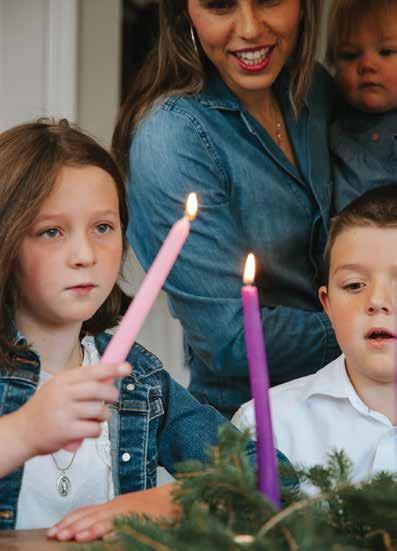
Each of Advent’s four weeks has a theme: hope, faith, joy and peace, respectively. Each powerful virtue gives context to Advent. My parish priest says that faith is, very simply, “the memory that God has changed my life. It’s the certainty now of a past experience.” Looking back at how the Lord blessed and sustained us opens our eyes to the fact that He’s doing it now, too. Hope, my pastor says, is that same certainty applied to the future. In short, God blessed me, He blesses me, and He will keep blessing me.
Joy comes from our own gratitude for the blessings we’ve
been given; and peace abounds from all of the above. When seen through an Advent lens, hope, faith, joy and peace reach new heights at Christmas, yielding a spiritual thrill and greater understanding of what each one means.
Light your Advent wreath every time your crew sits down to dinner. Pray for an increase of hope, faith, joy and peace at the end of each “Bless, O Lord,” adding simply, “God our Father, increase our _____. Amen.”
Make a special Sunday dinner for your family. In recent years my crew were invited every weekend to special Advent potlucks with friends, during which we lit an Advent wreath, prayed and enjoyed a meal together. By participating and letting our kids know this was for Advent, we taught them that this period of waiting is sacred and worthy of special recognition.
Beginning December 1, each day read one chapter from the Gospel of Luke, individually or with your spouse or family. You’ll finish on Christmas Eve, by which time you’ll have a deeper comprehension of Who has come and why. A dear friend of mine read and prayed with this Gospel and simultaneously began attending daily Mass. “I know Who it is that I’m receiving,” she told me serenely. The experience strengthened her intimacy with Jesus, making it more personal and bringing to life the sanctity of Christmas.
The Jesse Tree is named for King David’s father, whose lineage brought forth the Savior. This tradition’s daily stories, prayers and ornaments tell the story of God’s plan of redemption, from Creation to Christ’s birth. The Jewish people waited for Jesus, not for four weeks like us but for thousands of years; all the while God made Himself known and present to them. Present-day society is not accustomed to waiting, but our faith calls for it. The Jesse Tree invites us to sit with that wait, to appreciate the great relief for us of the Word being made flesh. In reflecting daily on salvation
history, we can ask Jesus to show Himself to us like the Father did in the Old Testament, especially during week #4 when Advent starts to feel like generations instead of days long.

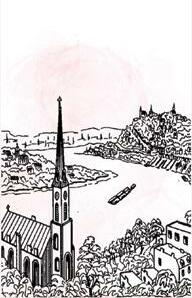


L.M. Montgomery wrote, “Looking forward to things is half the pleasure of them.” For every significant event in our lives, there’s a delightful buildup of anticipation. Engagement comes before the wedding. Pregnancy comes before birth. If we immerse ourselves in Advent, in this holy expectation of the Lord’s presence among us, our hearts will brim with joy throughout Christmas Day and the following season. The secular preparation for Christmas, though exciting, pales in the light of this glorious feast that celebrates the longawaited fulfillment.
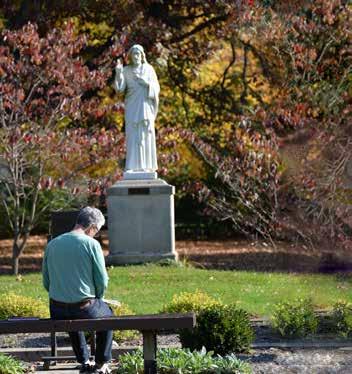
SHINE
Kids sure can be tough on parents.
If I’m gone one night a month for work, they tell me I’m never home to spend time with them. If I lose my temper one time in a month with my 13-year-old for… well… acting like a 13-year-old, he asks why I’m always so mad at him.
Even though I know these are just natural, albeit irrational, reactions of kids, it still stings! After all, I want to be a great dad. And as we approach Christmas, parent-mode goes into overdrive—cutting down the tree, hanging the Christmas lights, buying and assembling the gifts, planning all the special activities, working so you can pay for all of it…
But last year I was struck with an idea that changed how I thought about the season. Picturing the Christmas tree on Christmas morning with mounds of gifts stacked high and wide around it, I wondered: What if the only thing I could put under the tree was who I am, not what I can do or buy?

What if I could only set out my love or dreams for my family? What if all they could see was my joy, hope or peace? How would the tree look then? Let’s shine a light on ways you can be a gift of joy, hope and peace for your family this Advent season.
Joy is a disposition, a brightness of the heart and an exercise of the mind. It is found in the darkest and loneliest of places because you bring it with you, it is not something that happens to you. While we foster joy through our relationship with God, I’ve found another way to foster it, even when joy isn’t yet there: gratitude.
Gratitude fosters joy. You can’t be grateful and joyless at the same time. Make it a practice this Advent to be thankful. Remind yourself frequently of all the gifts God has given you. Say, “Thank you,” to others, even for the little things. Talk about gratitude at dinner with your family.
When you’re grateful, you will be joyful without even trying.
Hope is an infectious mix of anticipation and desire. You expect something good just past the horizon. There’s a reason you find the world a more naturally hopeful place during Advent: it is filled with an anticipation and desire for Christmas. Sure, some people hope for the wrong reasons— but it is hope nonetheless. And hope is never a bad thing.
To best build hope, remind yourself and those you love of the good things to come. Advent’s traditions help foster hope: Advent wreaths, nativity scenes and reflection books. Commit your family’s Advent traditions with special focus this year.
Peace is only found in the present moment. With so much to do and many places to be, Advent isn’t known as the most peaceful time of year. It’s easy to get so caught up in preparing for the next thing that you aren’t present in the current one.
Be a steady rock in Advent’s swirling storm of chaos. Put your phone away—not in a pocket or on the table near you, but upstairs or in another room, and silence it. Look at people, and really listen to them. Walk slowly. Speak softly. These little actions are signs of peace in the present moment, and they won’t go unnoticed.
Kids love to run downstairs on Christmas morning and see a Christmas tree surrounded by mounds of presents, but you are the greatest gift to those you love—just as they are to you.
If all your family found under the tree on Christmas morning was your joy, hope and peace, what would the tree look like?
DOMINICK ALBANO
is The Catholic Telegraph’s director of digital engagement, an author and national speaker. He and his wife have been married for 15 years and have four sons. dalbano@catholicaoc.org

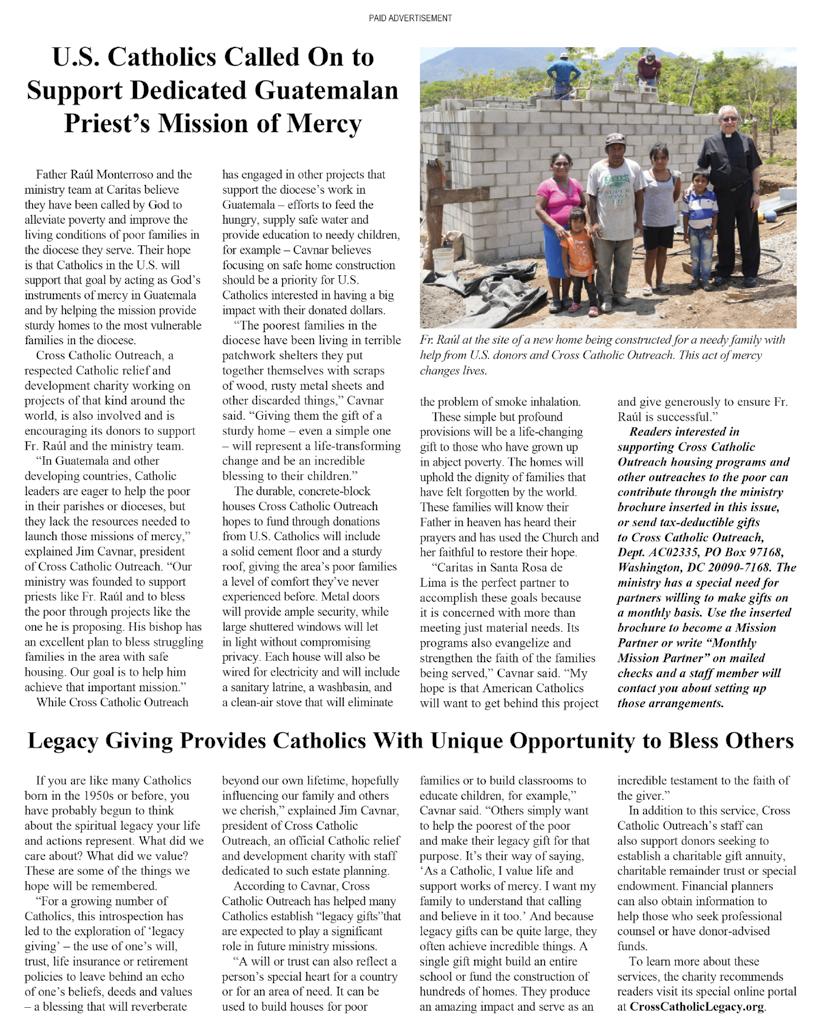
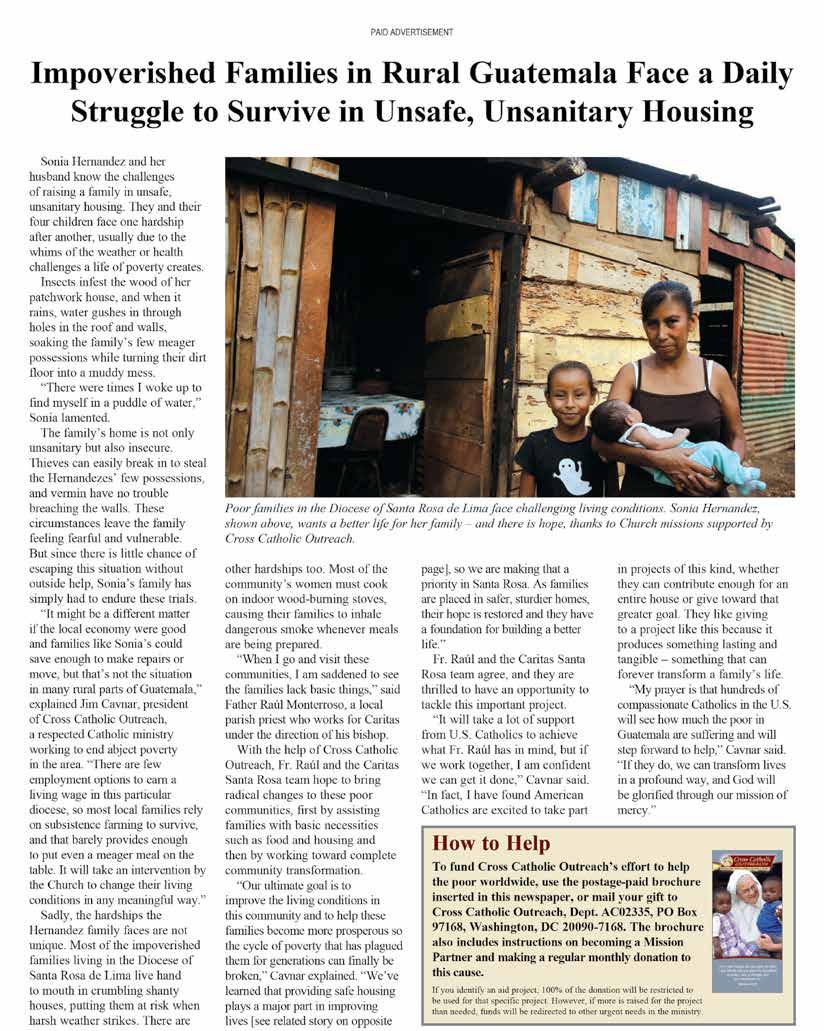
God has ways of working through us, especially when we aren’t expecting it.
That’s true for the Fiorelli family—Laurel, Nick and their children, Risa and Theo. Parishioners at Xavier University’s Bellarmine Chapel, they have supported Su Casa Hispanic Center for several years.
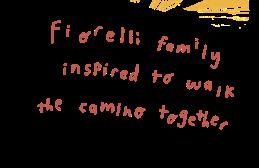
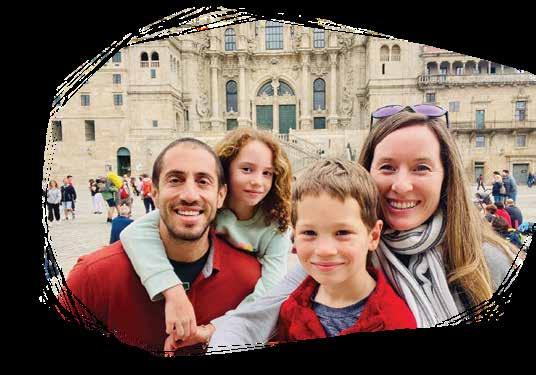
Su Casa Hispanic Center, a Catholic Charities of Southwest Ohio (CCSWO) program, provides services, including emotional and physical support, to Cincinnati area Hispanic and Latino families. For the Fiorelli family, it also provided life-long friends.

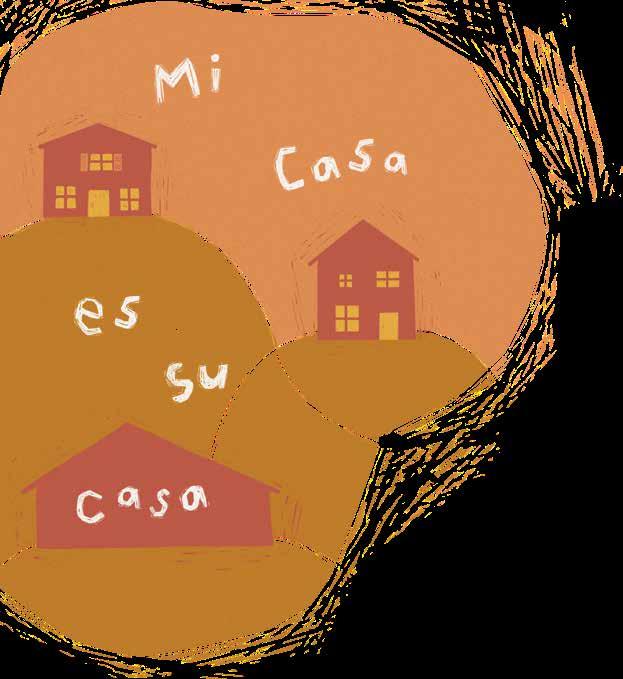
“Su Casa has been a special place to us since we moved back to Cincinnati,” said Laurel. “Five years ago, our parish

got connected with the Kino Border Initiative, which aids Latin American immigrants in claiming asylum across our southern border. Sitting in church one Sunday morning, our priest announced that our parish had agreed to welcome a family of four from El Salvador, and that their most pressing need was housing. Nick and I exchanged a glance with each other, and in that moment, we both heard from God the same thing: that family is to stay with you. It was a powerful moment, and also confirmed that what we felt in that instant was a clear message from God, since we both felt it.”
Parishioners helped convert their basement into an apartment, and the Fiorellis welcomed the El Salvadoran family into their home September 2017. While the family
has since moved, they get together frequently to celebrate birthdays, holidays and more.
“Su Casa is a place that is near and dear to us because it’s a place that is near and dear to our friends,” shared Laurel. “And to our kids, it’s a place that is helping to keep their friends here in the country and thriving.”
Keeping those friends in mind, the Fiorellis planned for over a year, then walked the Camino de Santiago this summer.

“During that year, we did what we could to prepare physically (by training together as a family), mentally (by researching routes, best practices of walking with young kids, and packing only the most necessary gear since we would be carrying it all on our backs), and emotionally (by discussing with our kids topics like resilience, frustration, disappointment, overcoming obstacles, setting goals, etc.),” reflected Laurel.
Prior to this life-changing pilgrimage, the Fiorelli children held a lemonade stand. Their parents did not think much about the entrepreneurial effort, until the

children came to them afterward.
“Risa and Theo surprised us when they came in holding money in a baggie, labeled ‘For Su Casa,’” said Laurel. “We don’t know if they planned to hold the lemonade stand to raise money for Su Casa or if it was an idea they came up with in the process. All I know is that we intentionally have conversations with them, at a kids’ level, about topics such as immigration, welcoming people who are different than us, and how when things aren’t fair, we can try to make them right. They have overheard me, many times, talk about Su Casa and the wonderful work they do. I think they wanted to be a part of that work because they know how many lives Su Casa has helped change.”
While the Fiorellis’ parents did not plan to connect the lemonade stand profits with their Camino walk, that quickly changed when the proceeds and children’s happily contributed piggy banks’ contents raised $120. Inspired by her children, Laurel created an online walk-a-thon fundraiser where Su Casa supporters could donate while the Fiorellis walked the Camino. Between the lemonade stand and online fundraiser, the Fiorellis collected over $5,000 for Su Casa.
“If you choose to, walking the Camino can be a solitary experience,” said Laurel. “Many people use it as a time to reflect, and to go on an inward journey even as they cover so many miles. But for us, walking the Camino was a communal experience, a way to participate in an ages-old tradition, to interact with a fascinating history, and to invite others to enjoy it alongside us in prayer or in giving. Su Casa walks along with migrants on their journeys, accompanying them through joy and pain, through hardships and successes, through things that affirm our belief in humanity and through things that break our hearts. In a small way, our intention was to join in solidarity with the hundreds of thousands of migrants who journey in the hopes of something better.”
“I have known Laurel and Nick for a number of years, and they have always demonstrated inclusive and welcoming spirits; but their journey to El Camino de Santiago and how they linked that to their faith, spirituality, and personal reflections,
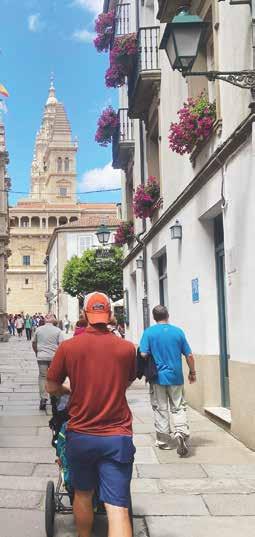
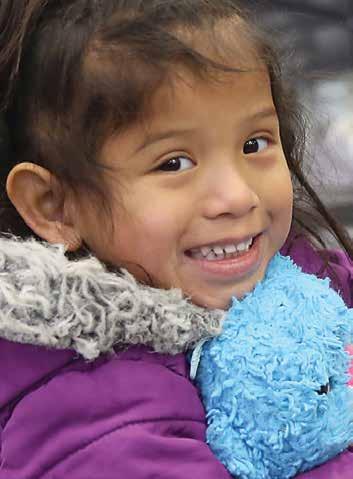

took things to another level,” shared Su Casa Hispanic Center Director Giovanna Alvarez. “In addition to the transformative journey that they experienced as a family, they raised funds for Su Casa. We are very thankful and hope they can serve as inspiration to other individuals and families that want to create a positive impact in our society.”
“When we listen to [the] Spirit, it is unlikely our life will take a straight path,” said Laurel. “On the contrary, it is likely that the unexpected will happen. Our involvement with Su Casa, and our walk along the Camino, are experiences that have changed the way we look at the world forever. We can never unlearn or unsee the things we have experienced, so we can never look at the world the same again. We can never withhold empathy or love from immigrants who have fought for their lives to be here. Never. And we can never take for granted the beauty in this world, and how incredible it is to journey it step by step by step. Never. We are so, so grateful for both.”

Catholic Charities Southwestern Ohio serves and empowers local families in Greater Cincinnati. Through your generous contributions we are able to provide food assistance, senior and caregiver services, mental health counseling, family and parenting education, case management and assistance for immigrant families, legal assistance for individuals seeking naturalization, and much more.
Please prayerfully consider making your annual gift now. Your support is essential in sustaining our works of mercy.
DONATE TODAY.
Serve | Engage | Empower
DONATE securely online at ccswoh.org or mail in your donation
Enclosed is my gift of:
£$25 £$50 £$100
£$250 £$500 £$__________
Please make checks payable to:
Catholic Charities Southwestern Ohio Mid Pointe Tower, 7162 Reading Rd., Ste. 600 Cincinnati, OH 45237
What do lettuce and bicycles have in common? Dig deep enough and you’ll find both in the STEM (Science, Technology, Engineering and Mathematics) program at Bishop Leibold School in Dayton. For the 12th consecutive year, hands-on experiments, a diverse range of creativity and extensive faculty support helped land the K-8th grade school in the top spot for The Governor’s Thomas Edison Awards for Excellence in STEM Education and Student Research for the 2021-2022 school year.
Starting the program 12 years ago, STEM coordinator Beth Allaire focused on building a “comprehensive plan,” which included STEM training for all Bishop Leibold teachers and programming across all grade levels.
“We have a class period that is dedicated each week for each grade level to experience STEM programming through the engineering design process,” she said.
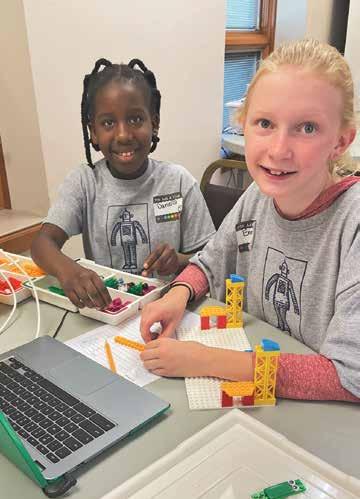
This time allows students to collaborate, make decisions and think through problems. However, Bishop Leibold’s STEM education goes beyond designing, testing, evaluating and making improvements. Students must also explain what they are doing and why—in writing.
“We make sure we have all of our teachers on board and we make sure it’s cross curricular,” explained Bellaire. “Our students are becoming very good at making an argument based on evidence. So, when they are truly engaged in a project or a concept that they have designed, then they are able to write a strong piece of writing, arguing why their design is the best design or why their design is going to be the strongest design. … they’ve learned how to do the ‘claim, evidence and reasoning’ (CER) writing through STEM.” Teachers from language arts and STEM collaborate to help students write that piece.
The Ohio Academy of Science selected 45 schools and 544 teachers to receive The Governor’s Thomas Edison Award for Excellence based, in part, on student involvement in youth science programs beyond the classroom. STEM education at Bishop Leibold
Bishop Leibold’s STEM education goes beyond designing, testing, evaluating and making improvements. Students must also explain what they are doing and why—in writing.
includes after-school clubs, science fairs, summer camps, guest speakers, field trips to area engineering companies and an annual Science Fest that draws up to 700 people.

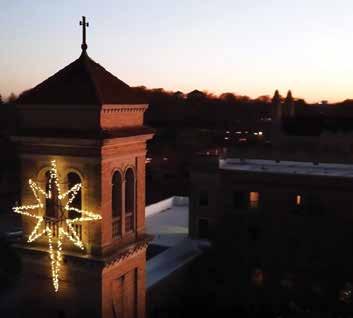



“We try to take advantage of all the partnerships that we can in the local community to help inspire our kids to see what the possibilities are for careers and ways of thinking about things, and just encouraging them to be problem solvers and good listeners and team members … that’s going to foster good people skills,” said Allaire.

“Students look forward to weekly STEM classes where they have the opportunity to work collaboratively to create, design, get messy and have fun,” said Jill Klimaski, a thirdgrade STEM teacher.
“The recognition that Bishop Leibold School receives from the Ohio Academy of Science—12 years in a row now—never gets old,” said principal Dr. Theodore Wallace. “Our Science Fest event each spring is a gym packed with families and community partners for science. It is an incredible experience for all ages.”
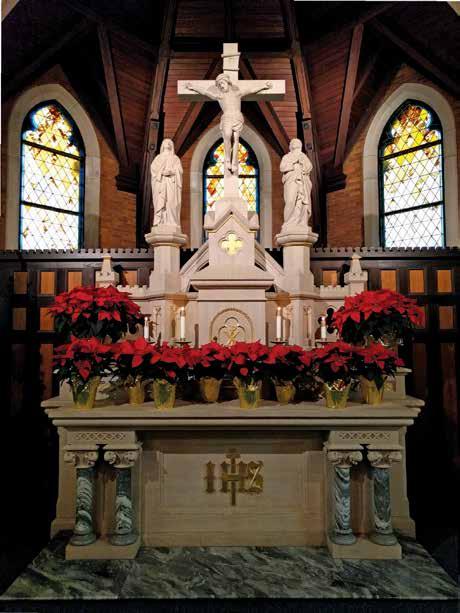
Classrooms have numerous projects currently in design and development phases, such as the fifth-grade students’ work designing and building a prototype prosthetic arm. And the energy bike fifth-, sixth- and seventh-grade girls learned to build and operate during summer camp is now used for learning. “These girls will go into the classroom and they’ll use the bike to teach about how the energy bike generates electricity for light bulbs and appliances,” said Allaire.
Students learn new technologies being integrated into the program, including a 3D printing station, leveling and Tinkercad, a 3D modeling program.
During the pandemic, teachers got students outside to continue working with STEM applications, building an outdoor vegetable garden space. “We now grow vegetables, we harvest them and we donate them to a local food pantry,” said Allaire. This includes lettuce from an indoor hydroponic garden. Up next: a mobile solar unit to pump water for the gardens.
“I just love my job and love watching these kids,” said Allaire. “Once you start the process, the kids just go. They take it and they run with it. They show you where you need to go.”
On Saturday mornings Gary DeFosse, 82, visits his local YMCA. Three times a week he swims or lifts, and he presently serves as a lifeguard.
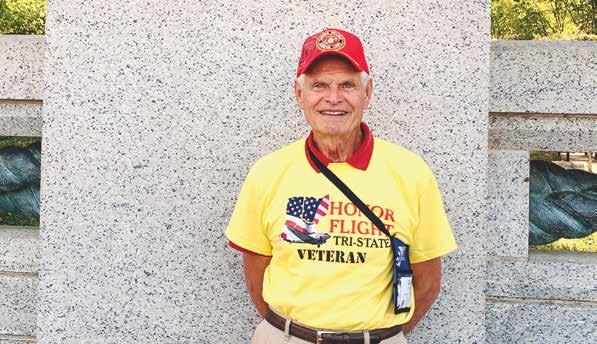
“The Y doesn’t have as many lifeguards as they need, so I volunteered,” he said. “They said my age doesn’t matter if I can complete the requirements. So far, I’ve been able to do everything they need me to do.”
Gary’s reputation is of being someone who brings others joy and who is, himself, joyful. It’s not because he is overly jovial, but because he’s certain and positive. What you see is what you get, and what you get is a man committed to goodness, service and simplicity.
After a swim, he heads home to do odd jobs around the house and enjoy the day with his wife, Linda. Married 53 years, he is uniquely suited to share, in a simple answer, his wisdom on a lasting marriage: “We feel really blessed with what we have,” he began, “and we go to Mass together.”
Gary and Linda faithfully attend Mass on Sundays and a few times during the week, bringing themselves and each other into the physical presence of God. Add gratitude for their life to their frequent Communion, and abiding love has been the consistent result.
Gary continued, “She’s such a great person and she kept us together.” Linda has a servant’s heart and gives of herself generously for their parish, St. Michael the Archangel in Ripley. Both are happy to be involved at the church where Gary grew up.
Born in a downtown Ripley house in 1940, Gary expressed gratitude for his devout Catholic parents, “They set a strong example.” A dedicated altar server, he volunteered as often as he could. “That was something special,” he remarked. “Being so close to what was happening, ringing the bells and bringing the water and wine to the priest. I watched the priest closely.” These memories are among the primary joys of his life.
Joining the Marine Corps, he was plucked from his Ohio River village and sent across the Pacific for a four-year tour in the 1960s. He spent time in Okinawa, Taiwan and the Philippines, and his service coincided with Vietnam. “We never did see hand-to-hand combat,” Gary said, “but we were ready in case they needed us.”
Although hard work in logistics filled his schedule, he was assigned to Temporary Additional Duty—playing basketball. He and a handful of fellow Marines were assigned to play regularly, including against the Taiwan Olympic basketball team.
“We were practice,” he chuckled. “Their team was huge, but they couldn’t jump two inches off the floor!” This was a highlight of his tour, with a bonus of attending the 1964 Olympics in Tokyo. After his four years, Gary headed home with a stronger sense of duty and service that yields fruit to the present day. He serves on the honor guard for local funerals and, after teaching himself the violin at 60, plays it during Sunday Mass.
Recently Gary took an Honor Flight, a trip offered to veterans who don’t have easy access to the war memorials in Washington D.C. An assigned guardian flies to D.C. with the veteran to walk him through the memorials. Molly Gallagher, Gary’s guardian, felt privileged to spend the day learning not only about his wartime service, but who he is. They quickly bonded and still see each other often.
“He and Linda are like family now,” Gallagher said happily. In awe of Gary, she specifically mentioned his humility. “He’s deeply proud of his family and how they’re living,” she said. After the Marines, Gary and Linda married and raised a family. Their son and daughter grew up to raise families of their own, each solid in the Catholic faith.
And this, even though Gary drifted from the faith as a young man. “In the Corps, I lost touch and didn’t have the opportunity or the desire to go to Mass, but then you get your stuff together and realize how important it is.”
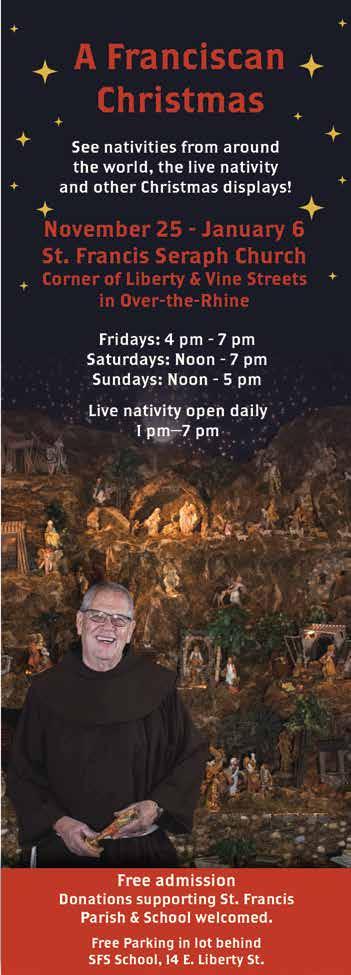
By God’s grace and Gary’s return to the faith, he now shares it willingly with anyone, from strangers to his barber.
Saturday morning, Gary went to the Y, spent time with his wife and checked off some to-dos. This may not seem remarkable to some, but Gary’s life has been marked by a steady flow of dedication, humility, service to others and devotion to the Lord. Those things, and his joyful pursuit of life, continue to be an inspiration to those around him.
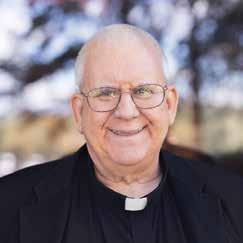 BY EILEEN CONNELLY, OSU
BY EILEEN CONNELLY, OSU
Certain experiences shape our lives, our vocations and our ministries, especially if we are open to God’s presence and recognize that He is with us always. Father Mike Paraniuk finds this especially obvious when he reflects on his long ministry as a chaplain at Cincinnati Children’s Hospital Medical Center.
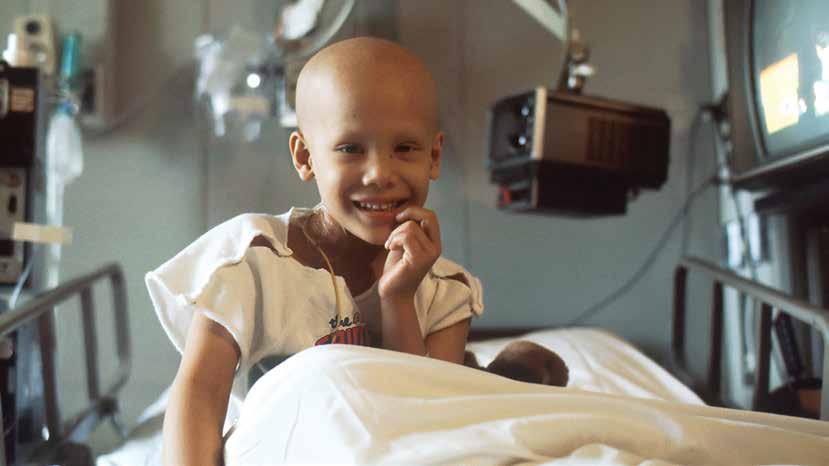
Ordained a priest for the Archdiocese of Cincinnati in 1981, Father Paraniuk was assigned as parochial vicar to Our Lady of Visitation Parish until 1984. There were then many parochial vicar opportunities available and an opening for a chaplain at Children’s Hospital. “I thought to myself: ‘Pity the priest who has to minister to dying children,’” he admitted. “The very thought of it frightened me. Would I be able to minister to them?’”
Several days later, a fellow priest working at the hospital called him to share that Father Paraniuk’s name surfaced during the priest’s prayers. “I think God may want you to be the new chaplain,” the priest told him.
Despite his misgivings, Father Paraniuk put his name in for the position. He was accepted—and quickly learned that he was the only applicant. “I intended to work there only three years. I ended up staying for 24 more,” he said. “I realized what I needed to do was show the children God’s love and help them realize that God is with them.”
Emmanuel. God is with us. Father Paraniuk still thinks of the children he ministered to, especially as the Christmas season approaches. “I spent 95% of my time praying over children who were dying,” he said. “If there were 80 children on a particular day, I would see them all, whether they had a tonsillectomy or cancer. Many of them wouldn’t make it to the next Christmas, so I tried to give a sense of hope to the children and their parents. They needed to hear God was with them and recognize that Christmas, especially, is such a time of hope. I tried to help them come to the realization that there is a whole other reality after this life and the children were going to be part of that reality in heaven.”
While his ministry was to strengthen others’ faith and help them experience God’s presence in their lives, Father Paraniuk is quick to point to how his own faith was deepened by the patients he served. He recalled meeting John, a 10-year-old boy, early in his ministry. Battling cancer, John enjoyed visits from the priest, and they talked about John’s great love for baseball. During one visit when Father Paraniuk noticed John’s condition appeared worse, the boy said, “Father, please stay close by, don’t leave the floor. I’m going to leave, go to heaven, then come back and tell you what it’s like.”
Shortly afterward, Father Paraniuk heard the code blue announcement and medical staff rushed to John’s bedside with a crash cart. Although he clinically died, staff revived him, and the first person he asked to see was Father Paraniuk. “He told me heaven was beautiful,” the priest said. “He saw relatives who had gone before him. He didn’t know them, but they knew him. He heard beautiful music. He said for the first time in a long time, he felt no pain. He felt totally comforted and at peace. He said, ‘I want that and am going back now, but wanted to tell you what it was like to strengthen your faith.’”
Not long after, John coded again and couldn’t be revived. “My faith was strengthened so much by John,” Father Paraniuk said. “He helped me realize what a blessing my ministry was. I celebrated hundreds of children’s funerals and comforted way too many grieving parents. But the children gave me a great gift. They affirmed my faith that death does not have the last word. They strengthened my faith to persevere in offering God’s hope when all seemed lost.”
Looking back on his time at Children’s Hospital, Father Paraniuk said, “It formed me in faith for the rest of my ministry, for my life, really.” He eventually became pastor of St. Mary Parish in Hillsboro, then St. Benignus, and now Our Lady of the Hills parish family, composed of St. Mary, St. Benignus, Holy Trinity in West Union and St. Mary Queen of Heaven in Peebles.
“It was priestly ministry in its purest form,” Father Paraniuk explained. “The ministry of a priest is to be the instrument of God’s presence among His people, to show them his love and care. So many people need to hear that. They need to hear, ‘Do not be afraid. Just trust.’ My ministry at the hospital was an experience of faith, hope and love on a regular basis. I’ve been able to bring that to being a pastor because I was equipped for it as chaplain.”

And, he added, “When my time comes to transition, I’ll welcome it with open arms. I know I won’t be alone because God is with us. It’s the whole message of Christmas. God is Emmanuel.”
Holy Family Catholic Church
Traditional Latin Christmas Mass
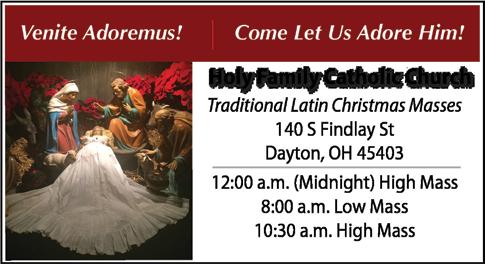
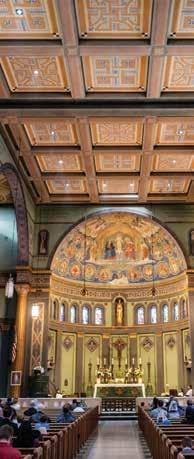
140 S Findlay St. • Dayton

12 a.m. (Midnight) High Mass
8 a.m. Low Mass
10:30 a.m. High Mass

(Carols begin 1/2 hour before High Masses)
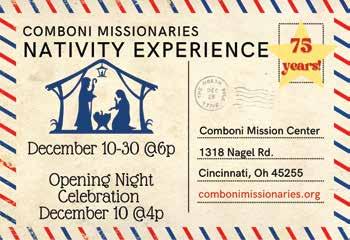
How would you describe a parish with a strong sense of community? You might say it’s warm and welcoming. It’s a place where people care for you and make you feel like you belong. It’s a place where there is fellowship and laughter, where the people feel like family.
Parishes, with their many gifts, graces and sacraments—with Jesus Himself right at the center—ought to be great at this. Some are, but many are not. I don’t have room to consider why, but I say that you don’t have to wait for the right people to get their act together before things can improve.
Here are four ways you can build community in your parish.

1. PRAY
Our communion with God establishes our communion with one another. Since we commune with God through prayer, as a community prays together, its sense of community increases.
The Mass is a powerful source of communion, but we can’t rest on our laurels. Consider other ways to prioritize community through prayer. Make the Stations of the Cross prayer guides available all year long, not just during Lent. Keep the church doors unlocked more often so people can pray at odd hours. Have prayer teams available after Mass so that anyone who needs prayer has someone to talk to. Most importantly, surround all your decisions as a parish in prayer. Imagine how effective our ministries would be if we prayed about them first!
2.
The first and only interaction many people have with your parish is on Sunday. So, how parishioners greet visitors is very important. While you might train ushers in the art of community-building, it can all be undone by one negative interaction with a parishioner.
So, smile. Be joyful and friendly. Create a “Welcome Table” with helpful people who address questions and concerns. Secretaries, smile when you answer the phone!
Smile instead of grumbling. Is a noisy family sitting in front of you? Smile at them. Has a parent climbed over you three times to take a child to the bathroom? Smile at them in a way that says, “I’m glad I’m here, and I’m glad you’re here, too.” If that gladness doesn’t come readily, pray for it. “Jesus, remind me how blessed I am and make me a source of blessing for others.”
Sometimes the scariest place to be is the place where you don’t know anyone. What can we do to not only be friendly but actually make friends? The next time you’re at the church, ask yourself, “How well do I know these people?” The person sitting next to you, do you know his name? Do you know where he’s from and what he does for a living? Do you know how long he’s been a parishioner or if he’s even Catholic? If you don’t, find out!
Take charge of your own friend-making. If no one reaches out to you, reach out to them! Befriend the people who are new or different. As they say in Cursillo, “Make a friend, be a friend, bring a friend to Jesus!”
Once you’ve made friends, engage in intentional friendship. Care about their physical and spiritual wellbeing. That’s what accompaniment is, and it’s vital to creating any real sense of community. Be patient with people. Everyone’s at a different place in their journey of faith. Listen to them. Talk honestly about your relationship with Jesus, and give them space to talk about their relationship, too.
Mentor others and be mentored yourself. No one’s meant to travel the road to heaven alone. Road trips are always better with friends, and yes, even with family.
NICHOLAS HARDESTY is the associate director of Adult Evangelization and RCIA for the Center for the New Evangelization. | nhardesty@catholicaoc.org
Like those pictured, nearly 25,000 senior sisters, brothers, and religious order priests have devoted their lives to prayer and ministry—educating the young, tending the sick, aiding the needy, and more. Yet years of serving for little or no pay have left a profound shortage in retirement savings. Your support of the Retirement Fund for Religious helps furnish care, medicine, and other necessities. Please give generously.
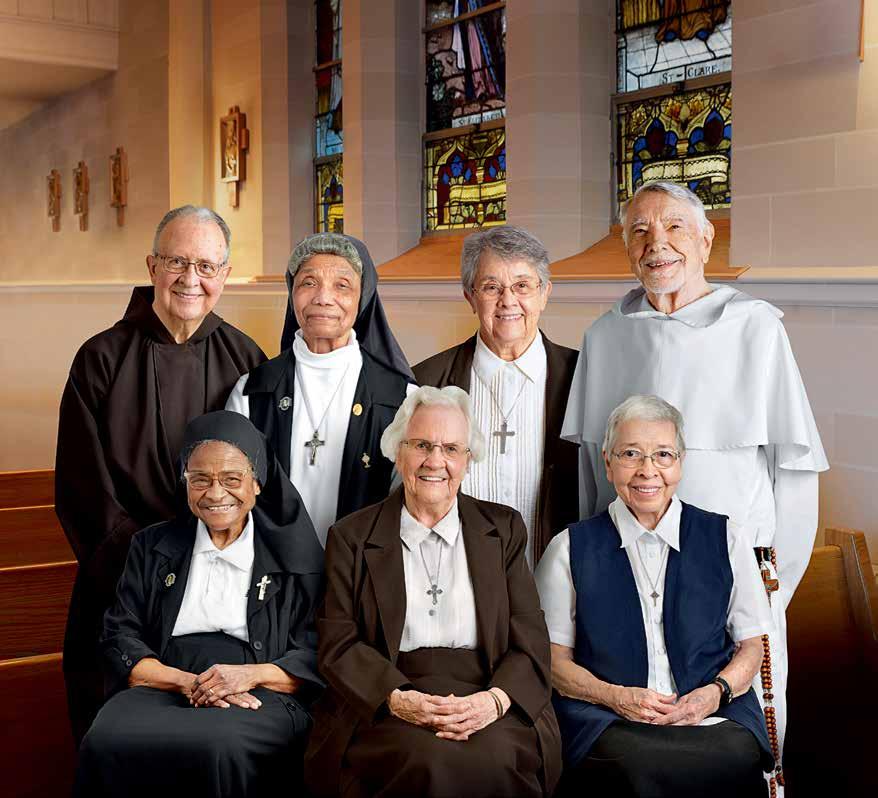
Please donate at your local parish
December 10–11 or by mail at:
Office for Consecrated Life
Attn: Maria Reinagel
100 E. Eighth Street, Cincinnati OH 45202
Make check payable to the Archdiocese of Cincinnati/RFR
retiredreligious.org
Born on September 15, 1858, St. Charles Eugene de Foucauld lost his parents and grandmother at an early age. His grandfather adopted him and lived to see Charles enter the military. Although Charles enjoyed traveling while in the military, he was undisciplined and liked worldly things too much, growing further from the Catholic faith. After his military service, Charles explored Morocco despite the dangers there. Fascinated by what he experienced, he wrote all about it, which became a scientific triumph, but he wasn’t at peace.
Returning home, he found more peace in Catholic churches than he had during all the misadventures of his youth. Over the next few years, Charles prayed fervently: “My God, if you exist, allow me to know you!” He grew in purity, zeal and love for the Eucharist, and followed God’s calling first to
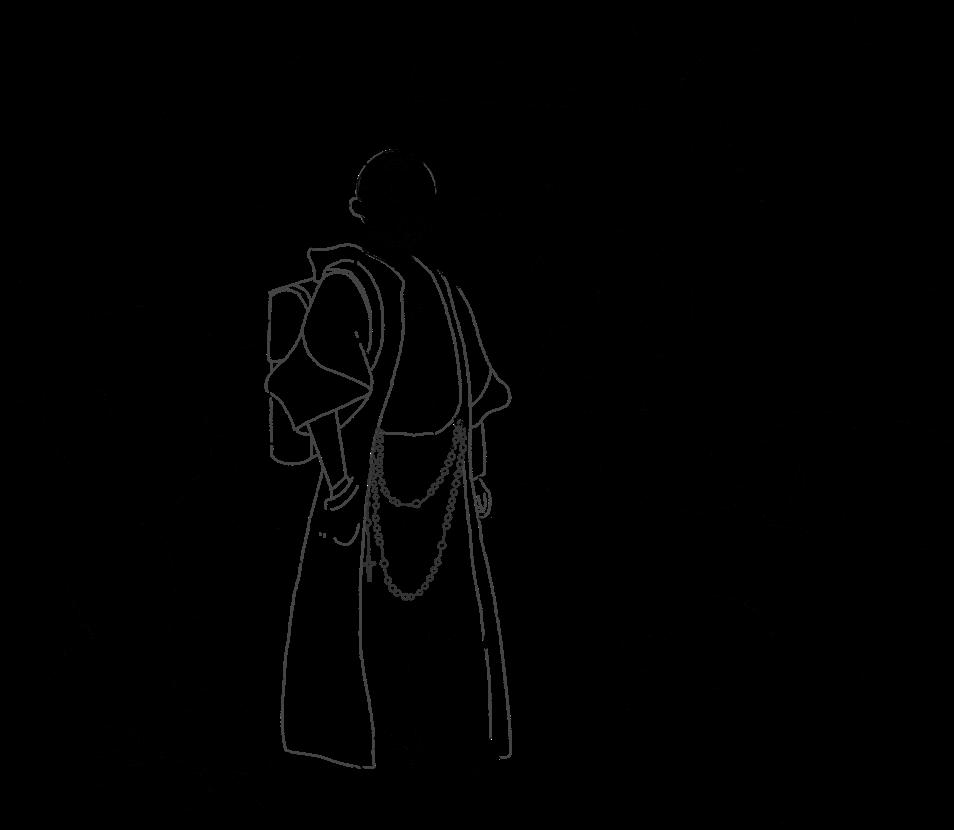
a Trappist community, then to serve a Poor Clare community in Nazareth. Finally, God called Charles to serve Morocco’s unknown and poor near the Sahara Desert.


Ordained a priest at age 43, God made it possible for him to bring the Blessed Sacrament to the sands of the Sahara where the Eucharist had not been for some time, if ever. Unlike his earlier life, this significant accomplishment gave him peace.
He prayed constantly, served faithfully and loved the people who traveled to his doorstep from dawn to sunset. Charles died at the age of 58, shot by militant rebels on December 1, 1916.
Craft Directions thecatholictelegraph.com/ stcharles-craft
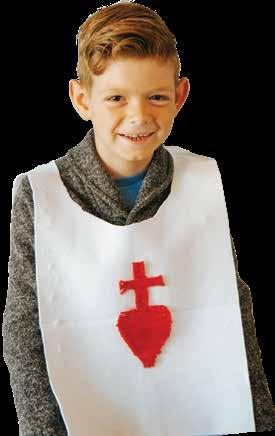

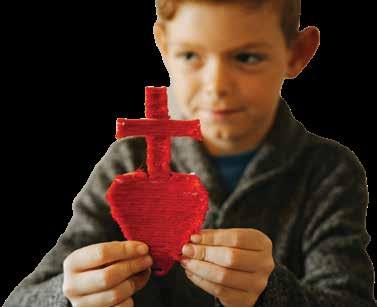

Adventure
Fervently

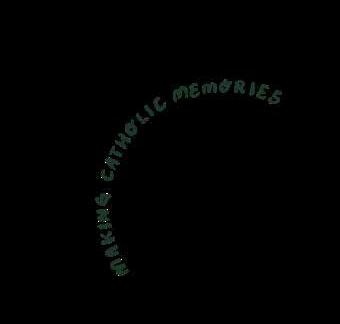

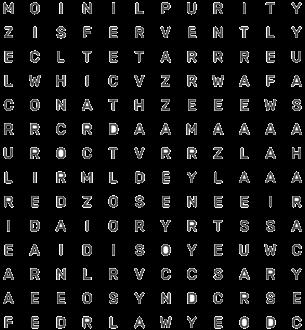
Military






Morocco Ordained
Purity Sahara
St Charles
Worried Zeal


At the beginning of human history, our first parents experienced original innocence, the state in which they had enjoyed harmony within themselves, in God’s friendship, in relationship with each other and in relation to the rest of creation. They then experienced a fundamental break from that original innocence when the “ancient serpent, who is called the Devil and Satan, the deceiver of the whole world” (Rev. 12:9) succeeded in inducing them to sin by sowing seeds of doubt into their minds and hearts. Let’s dig deeper into the nature of this temptation and see what relevance it has for us today.
In creation, God bestowed a special dignity on man by creating us in His image and likeness and establishing man as lord and steward of the visible world. Even more, God breathed divine life into us, placing us in a special relationship with Him and destining us to someday partake in His glory. In this context, God commanded our first parents not to eat of the tree of the knowledge of good and evil. While this may seem an arbitrary prohibition, Pope St. John Paul II highlighted how this command is essentially a reminder to man that we are creatures. Through this command, God was saying to our first parents and to all of us:
“Remember that you are a creature called to friendship with God, who alone is your Creator. Do not wish to be what you are not! Do not wish to be ‘like God.’ Act in accordance with what you are, and all the more willingly since this is already such an exalted status, that of being ‘the image and likeness of God’… [This] status… obliges you to act in conformity with what you are. So be faithful to the covenant that God the Creator has made with you, a creature, from the beginning” (Nov. 12, 1986).
To be a creature is to be the recipient of the unmerited gifts of life and existence. God loves His creation into existence and sustains it through the power of His love at every moment. With our creaturely status comes dignity, love, blessing and obligations. All creatures are called to act in accord with the nature they have received and toward the end for which they were created. Created as free, rational persons, man is called to freely cooperate with God’s will, using his gifts of freedom and reason to reign over the earth and make it a reflection of God’s infinite love, beauty, wisdom and goodness. Man is
called to know and love God with his whole heart and mind and enter into eternal communion with Him.
The prohibition against eating from the tree of the knowledge of good and evil is a loving reminder of man’s status and a protection against pride. Through this prohibition, God was telling our first parents that He alone has the authority to determine what is good and evil. Man cannot decide these things but must—for his own good—act in accord with the order established by God.
Satan casts doubt on God’s intentions and plants the idea that we can take good and evil into our own hands. We can become like God and determine right from wrong. He entices us to think God is suppressing us, alienating us from our potential. In order to be fulfilled, we must reject His laws and embrace autonomy (i.e., become a law unto oneself). Only then can we truly be free and come into our own.
This dynamic between Satan and our first parents reveals the inner logic of sin, which affects us even today. How often does modern man reject his Creator and the created order? How often do we try to recreate ourselves according to the image we conceive rather than receiving our nature and identity from God? How often do we reject God’s laws and those of His Church as arbitrary impositions rather than seeing them as the path to happiness? How often do we suspect God of oppressing us rather than trusting fully in His infinite, unchanging Fatherly love for us? How often do we take matters into our own hands rather than waiting hopefully upon the Lord?
In truth, it is not God who robs us of our dignity and blocks our deepest desires. Rather it is sin that alienates us from God, from ourselves and from one another. It is sin that wounds our dignity, our hearts and our world and robs us of grace, peace and joy. By pondering further the tragedy of sin and its effects on us, we can learn to reject the enemy’s lies and receive more fully and gratefully the gift of redemption in Christ.








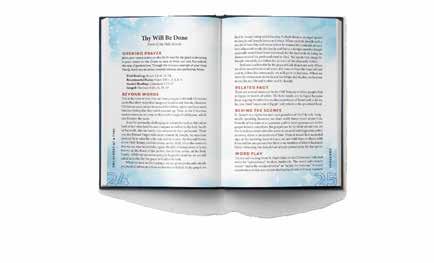

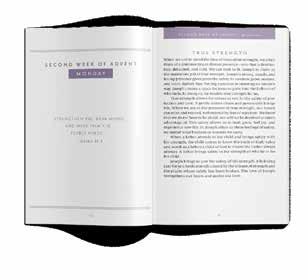
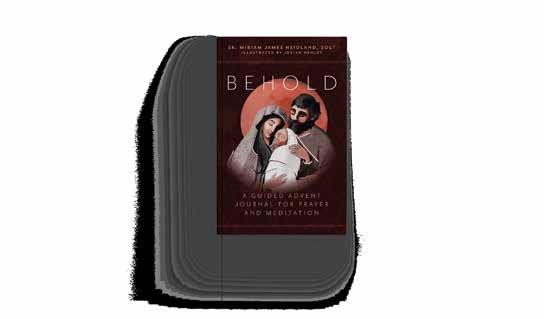

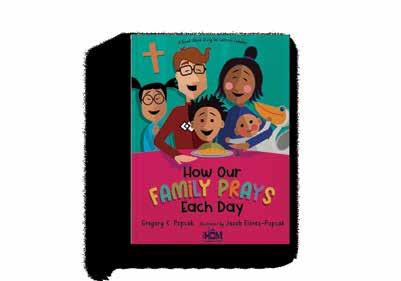




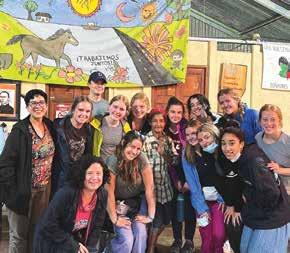




Nearly 900 men participated in the eighth Annual Men’s Eucharistic Procession on Oct. 15. The event began with Mass at the Cathedral Basilica of St. Peter in Chains, followed by the Eucharistic Procession through Downtown Cincinnati and ending with Benediction at Old St. Mary’s
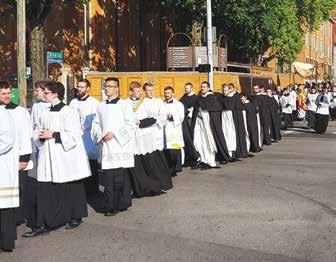
1 2 3 4
McNicholas High Shool student organization Hands
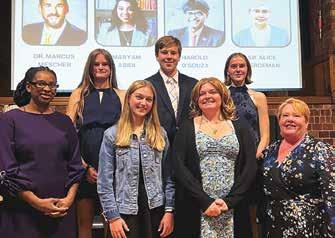
Across Campus (HAC) was honored for their compassionate leadership by the Intercommunity Justice and Peace Center (IJPC). At their annual gathering, IJPC awarded the first Youth Justice Award to HAC for their work to promote justice, diversity and inclusion at McNicholas and in the community.
Saint Ursula Academy students spent 10 days traveling throughout Costa Rica learning about the history,culture and current social justice issues and practicing their Spanish. Students were in the rural community of Longo Mai, home to many families from El Salvador, who, after fleeing some of the troubles in their home country, established this community. Students learned about the history of El Salvador and its relationship with Costa Rica, and to experienced the culture, challenges and everyday life of Longo Mai.
St. Joseph Church in Springfield held an “America Needs Fatima” Rosary Rally on Oct.15. Together the group prayed for the nation, the Church and for families.
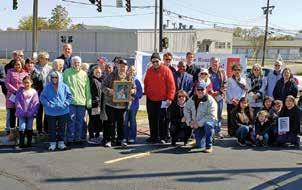
1 Some outdoor gear
2 Spanish pot
3 Spotted
4 Muse of lyric poetry
5 Run aground
6 Monk’s hood
7 Muslim title of respect
8 Arrogant
26 Chip choice
27 Loathe
28 The wine, after the consecration
30 God, to Pedro
31 Genesis serpent
33 Set apart as sacred

34 Author Zola
35 Vertical face of a stair
37 It precedes Philippians
39 Cut
43 Selfie look
46 Noah built one
50 Number of sacraments, in Mainz
52 Against
55 Tally
57 Wearies
58 Mother of Jesus
59 Primary symbol of Baptism, in Spain

60 Two sad brothers, when they lost an “m”?
62 Israeli semiautomatic weapons
63 Rock clinging plant
13 Sleeps briefly 21 Jesus compared a rich man to this animal
25 Charitable org.
64 Metal containers
65 Entr’___
66 To a smaller extent
T.P.
Funeral Home 2050 Beechmont Ave • 513-231-7150 Mt Washington/Anderson Twp
Family owned & operated since 1870
A Catholic familyowned funeral home since 1877 513.891.8373
A Catholic Family Owned Funeral Home –Since 1877 513-891-8373

GERRY KELLY FRITSCH
Traditional Irish Bagpiper gfritsch48@zoomtown.com cincinnatipiper.com 513.404.0049
Advent is a time of waiting, but what are we waiting for?
Jesus the Incarnate Word of God has already come into the world. “For God so loved the world, that he gave his only begotten Son, that whosoever believes in Him shall not perish, but have everlasting life” (Jn. 3:16).
Through Jesus, the love and mercy of our good God already reigns in our world. Through Jesus, the world was redeemed and salvation is available to all women and men. According to St. Francis of Assisi, all of creation participates in salvation because Jesus became one with the entire created world. On the flip side, Jesus is the best way that humans can relate to the Father.
The Franciscan view on the Incarnation emphasizes the love of God enfleshed in Christ as the center of reality, rather than focus on sin. In the 14th Century, Blessed John Duns Scotus, a Franciscan scholar, was asked, “Would Jesus have come if Adam had not sinned?”
He answered, “Yes. Jesus came because the divine Trinitarian communion of persons wished to express divine life and goodness.” For that reason, the whole universe was made in the image of the divine Word, and to participate in the life of the universe, that Word came as a created being, a creature, to show in a concrete, material way the form and model of all creation, made in the divine model. (Taken from
with Brother Tim Sucher, OFMHowever, sin seems to reign in our world today. We experience huge divisions among people, wars, talk of wars, and extreme poverty and injustice throughout the world. One only needs to walk our city streets to encounter many who are poor and homeless. This can make it difficult to truly believe that God’s love and mercy is present today.
I suggest that if we entered more fully into the Incarnation, not only as individuals but as a Church and a nation, the world would be a different place. If we lived in the reality of God’s unconditional love, our lives, our Church and our world would be filled with love, mercy and justice.
What are we waiting for? We are waiting for the return of Jesus so that He may establish His ultimate reign in our lives and in our world.
BROTHER TIM SUCHER, OFM
is a Franciscan friar of the Province of St. John the Baptist, headquartered in Cincinnati. A friar for 46 years, he attended Duns Scotus College Seminary, Southfield, MI, and St. Leonard College, Centerville, OH. He taught high school, managed a homeless shelter, was director of student friars on the graduate level and directed outreach programs in various cities. Presently, he is the guardian of St. Francis Seraph Friary and pastoral associate at St. Francis Seraph Church/ School in Cincinnati’s Over-the-Rhine.
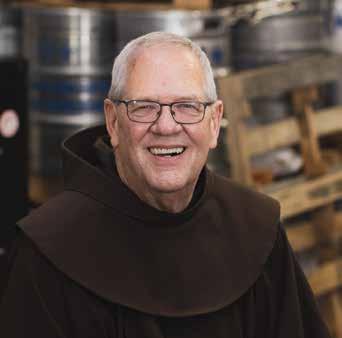
When you bank with Christian Family, we give your money a mission. Your money helps provide other Christians with low-rate loan options and finances local church building projects and ministries.

Scan the QR code to start banking with us!

